2026 Hyundai Ioniq 9: The Big EV With 3 Rows

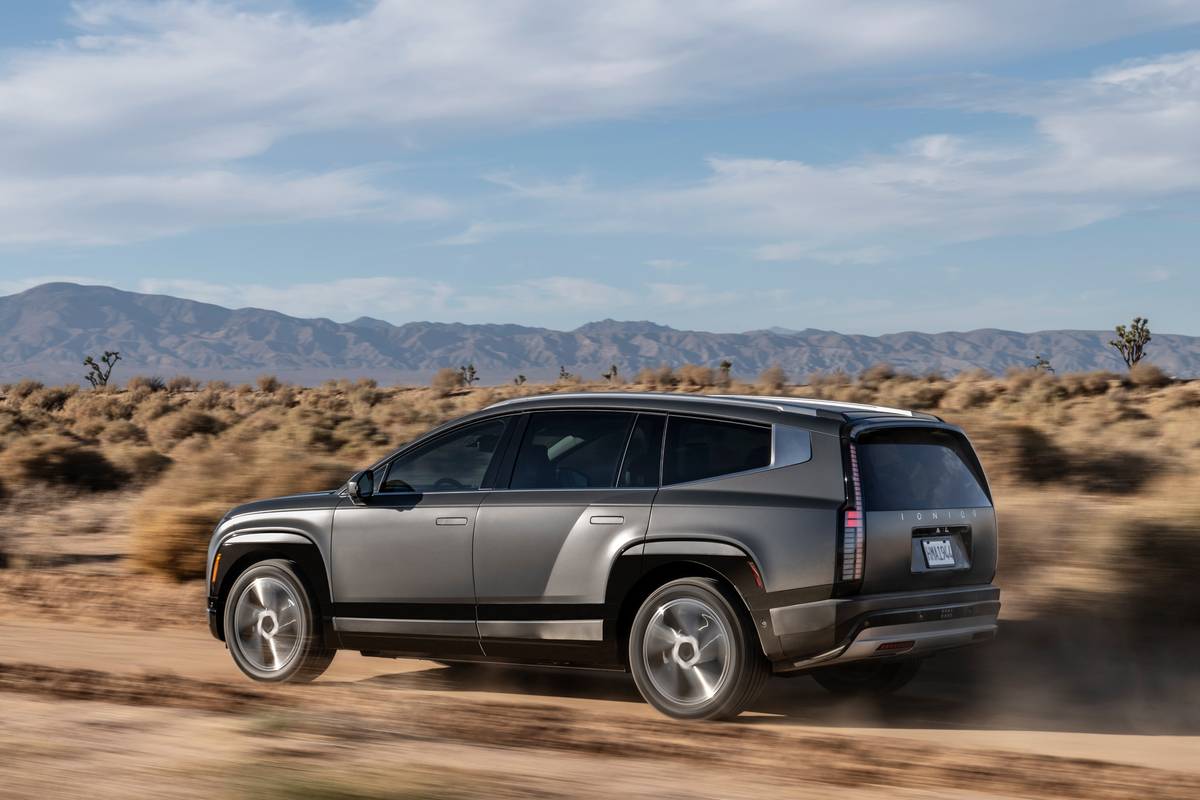
Competes with: Kia EV9, Rivian R1S, Tesla Model X, Volkswagen ID.Buzz, Volvo EX90
Looks like: A squared-off stretch Ioniq 5 for the whole family
Powertrains: 215-horsepower single electric motor, 303-hp or 422-hp dual electric motors; 110.3-kilowatt-hour battery pack; rear- or all-wheel drive
Hits dealerships: Mid-2025
We’ve all been expecting this ever since Kia released its EV9 three-row electric SUV: Surely Hyundai would follow suit with a version of its own. That day has arrived with the debut of the 2026 Hyundai Ioniq 9. Best of all, Hyundai gave three-row EV shoppers a good reason to wait in the form of a bigger battery pack and increased range over its Kia sibling.
Related: Our Experience With Cars.com’s Long-Term 2024 Kia EV9
Few three-row electric SUVs exist on the market today, and the only one targeted at mass-market consumers so far is the EV9 made by Hyundai’s sister brand, Kia. With the popularity of the Hyundai Palisade and Kia Telluride three-row gas-powered SUVs, these two brands releasing their own electric three-row SUVs makes a lot of sense. Fortunately, this is no mere rebadge. With dramatically different styling on the outside, the Hyundai and Kia sister EVs may be related, but you won’t mistake an Ioniq 9 for anything else on the road.
The Bigger, Longer Ioniq for Seven

The 2026 Ioniq 9 takes Hyundai’s unique styling language from the Ioniq 5 and Ioniq 6 EVs and applies it to the ever-popular three-row SUV format. Strong character lines and pixel-like lighting elements combined with a rounder roofline than the EV9’s give this SUV a character that’s all Hyundai.
Hyundai designed the Ioniq 9 with aerodynamics in mind, as it features hidden antennas, an active air flap for cooling, a specially designed underbody cover and aerodynamic wheel designs. All of these contribute to a low coefficient of drag.
Ioniq 9 buyers can choose from 16 different exterior colors, seven different interior color schemes (six of which are two-tone), and 19-, 20- or 21-inch wheel designs.
More Power for Longer Road Trips
The Ioniq 9 may share a platform with the EV9, but it features several key upgrades that let it go slightly longer and faster. The most notable of these is a 110.3-kilowatt-hour battery, which packs 10.5 kWh more capacity than the long-range battery pack available for the EV9. Official EPA figures aren’t out yet, but Hyundai says it’s targeting a range of at least 300 miles for every Ioniq 9 trim and that the long-range RWD variant on 19-inch wheels can go up to 335 miles on a single charge in EPA-style tests.
The Ioniq 9 comes standard with the North American Charging Standard plug, which gives it easy access to over 17,000 Tesla Superchargers across the country. Hyundai also claims that its battery system is capable of going from a 10% to 80% state of charge in just 24 minutes using a 350-kilowatt DC fast charger. Its battery can charge as one 800-volt battery when chargers allow, or as if it’s two 400-volt batteries to optimize charging on slower chargers. The Ioniq 9 also features vehicle-to-load capabilities, meaning you can power tools or even your home from the vehicle in a pinch.
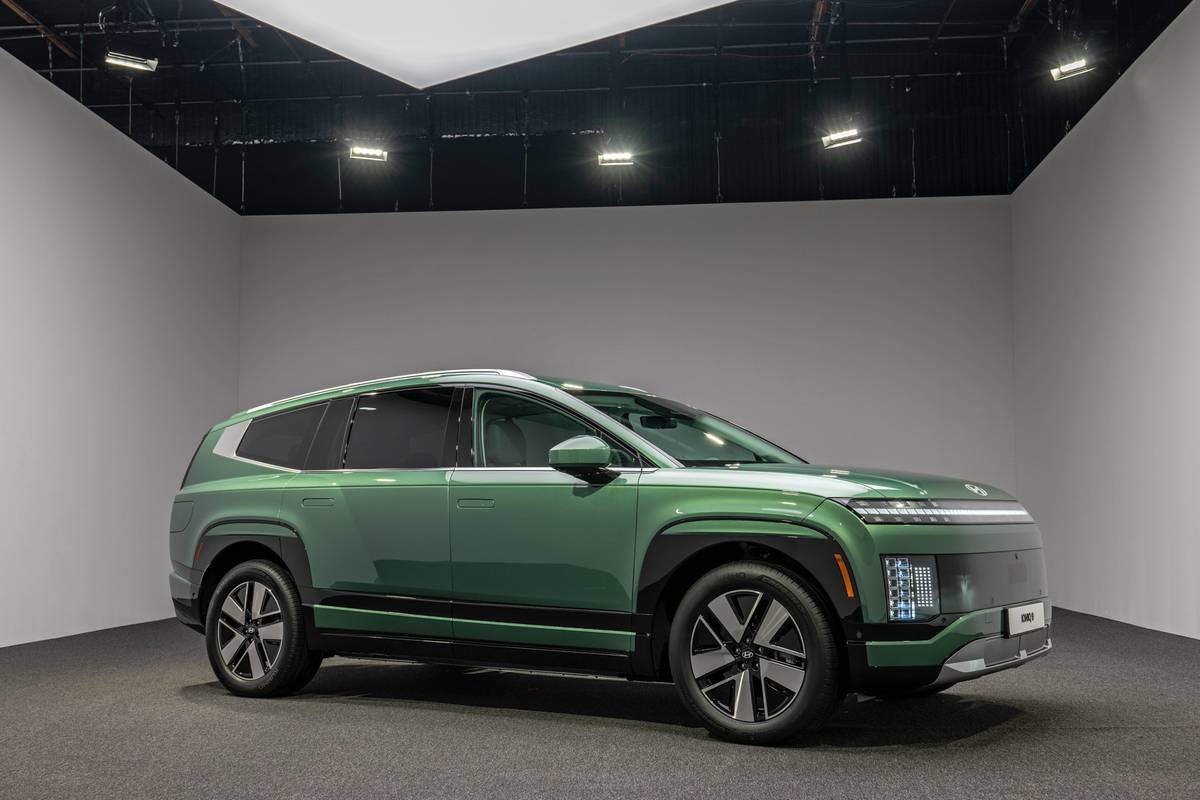
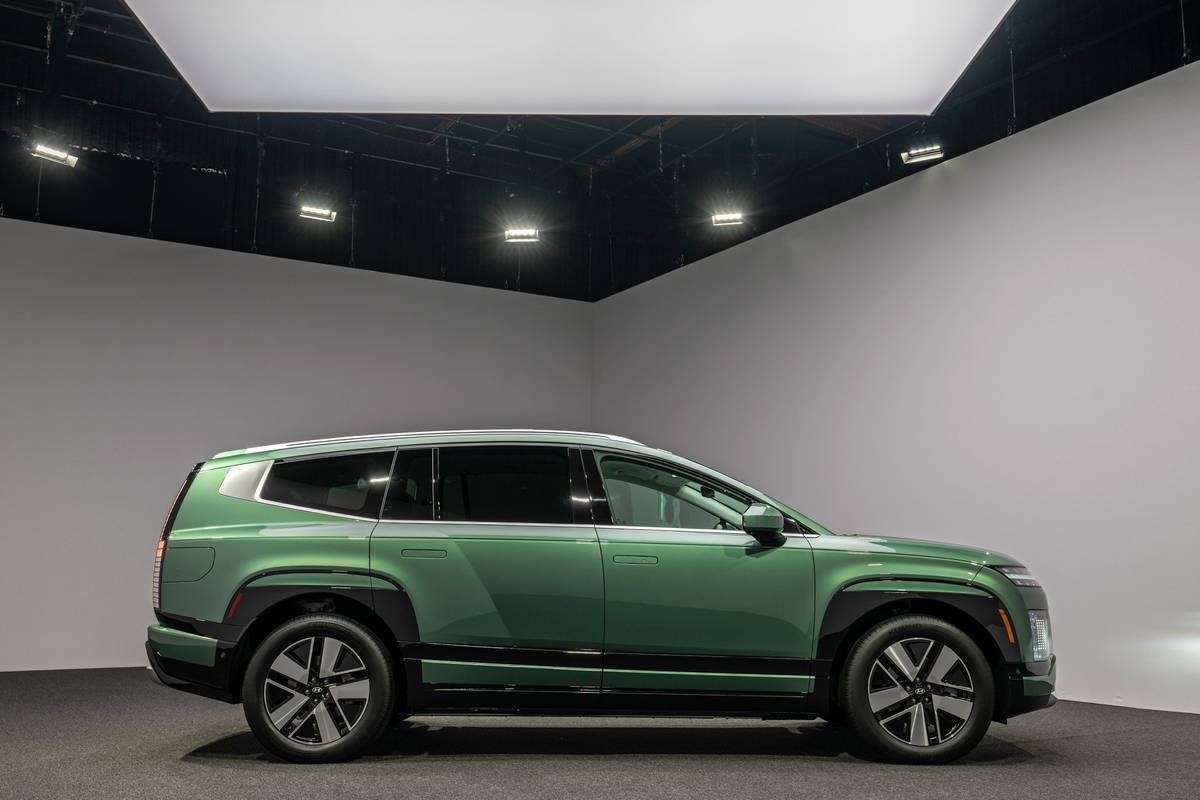
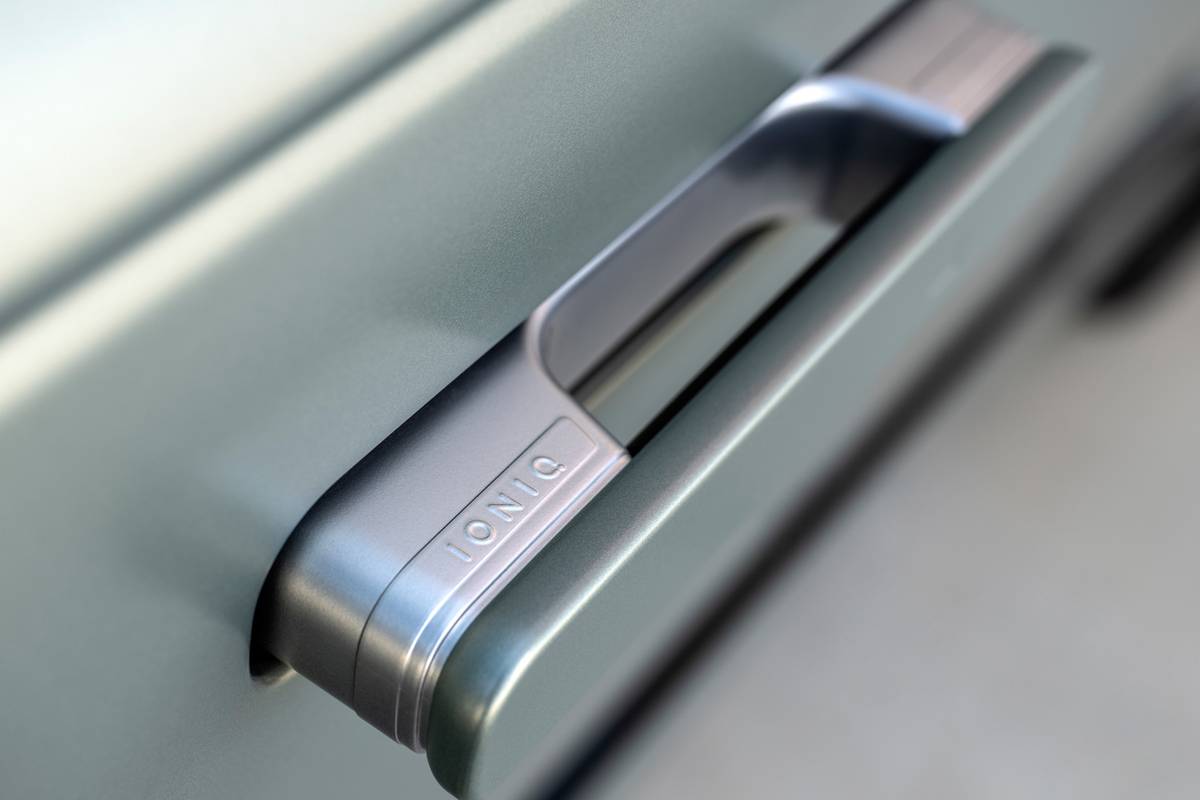
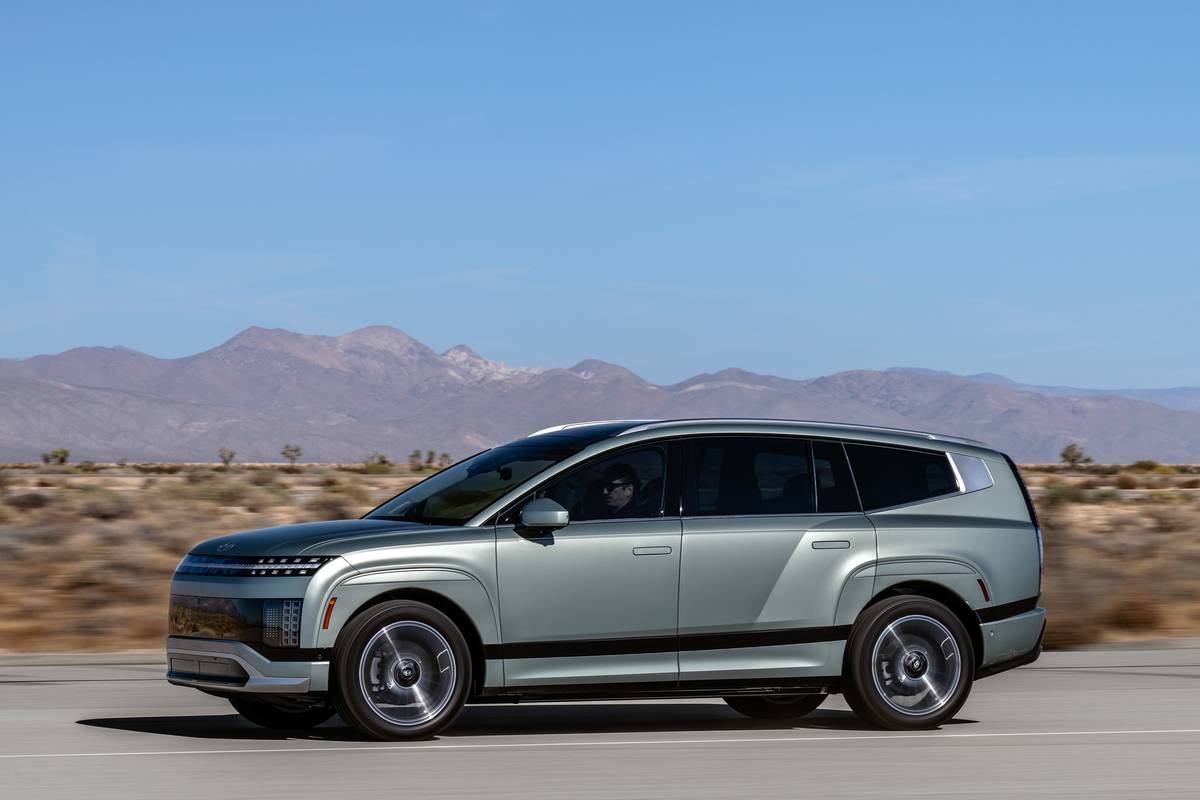
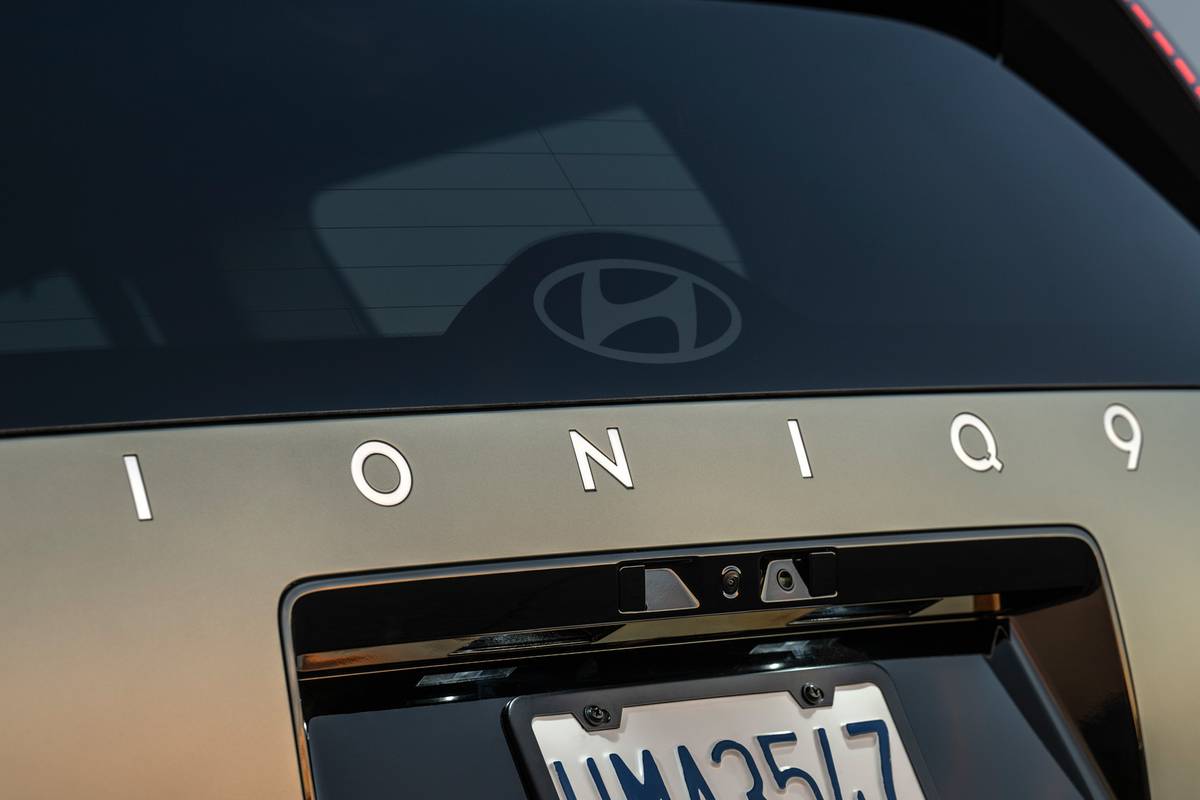
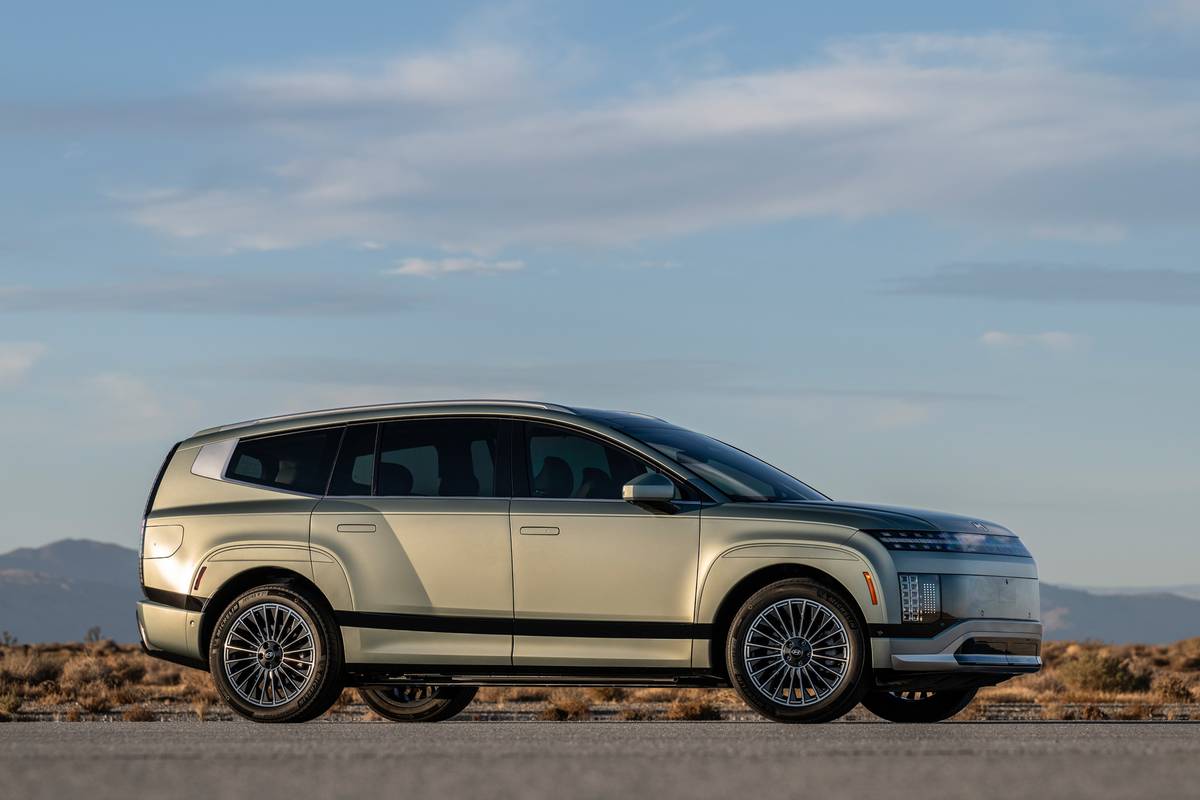
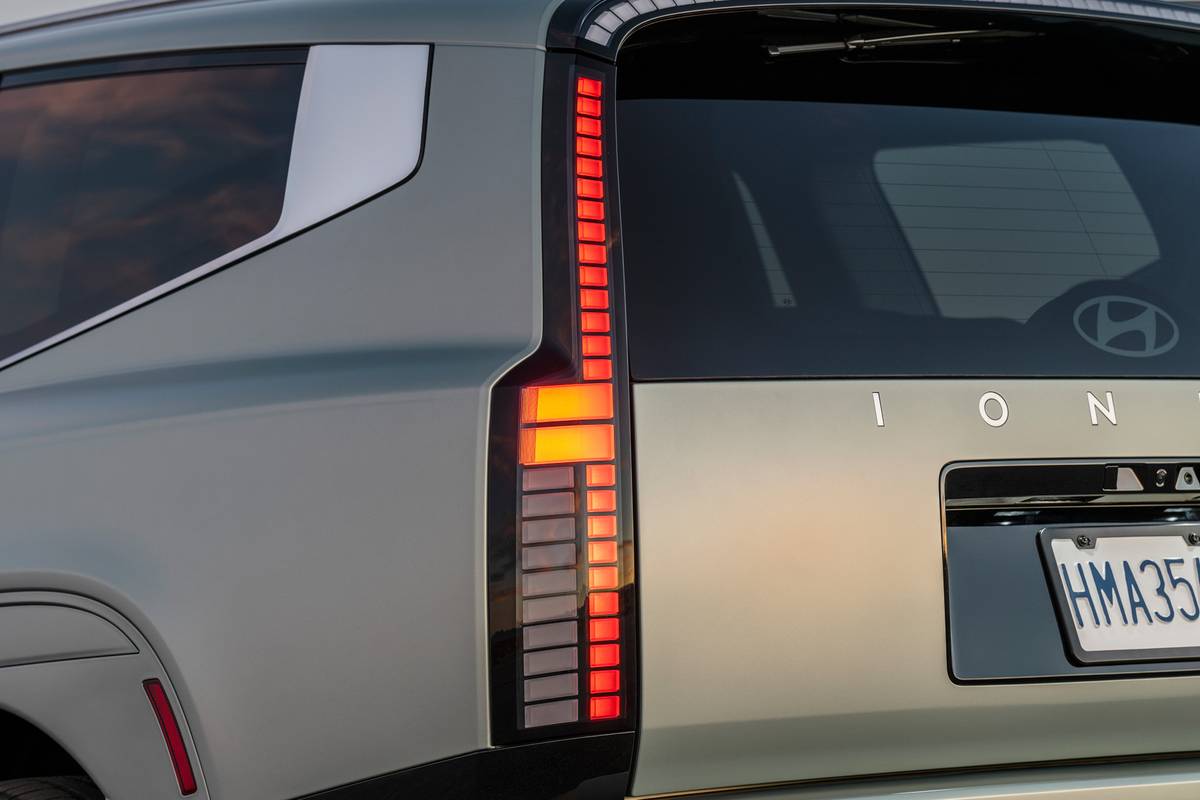
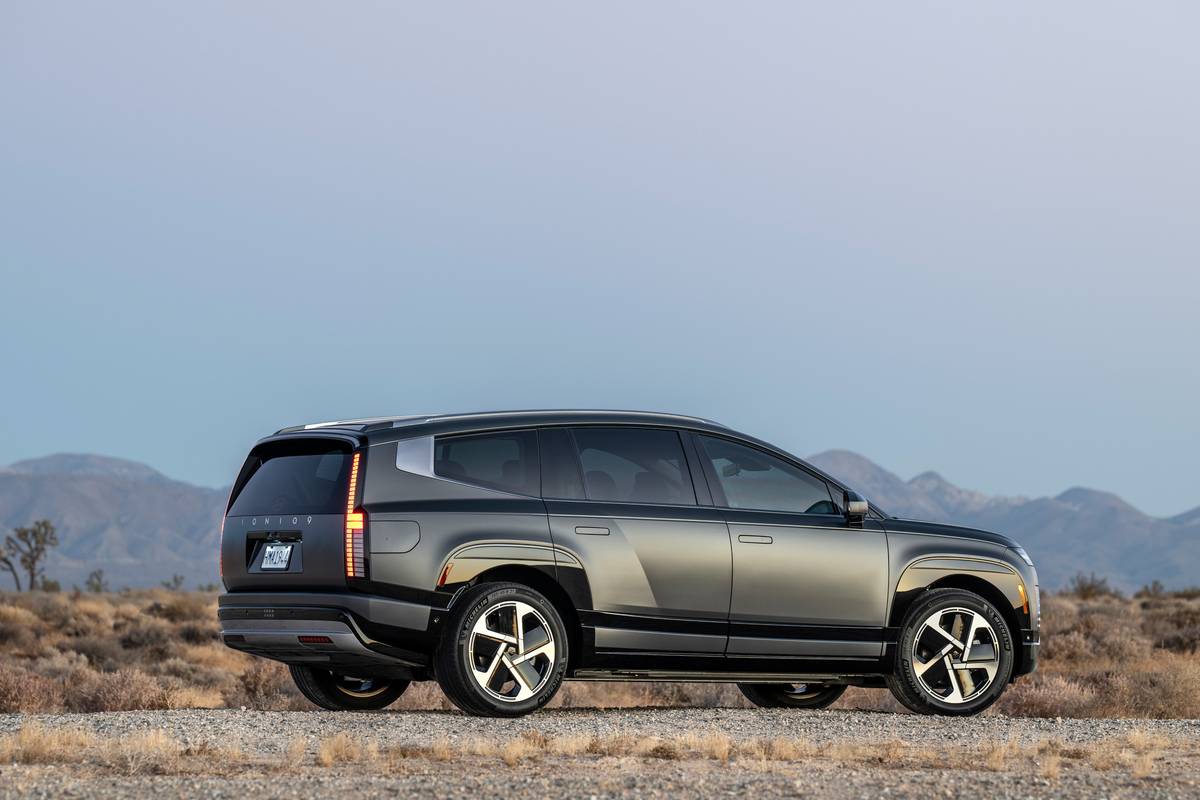
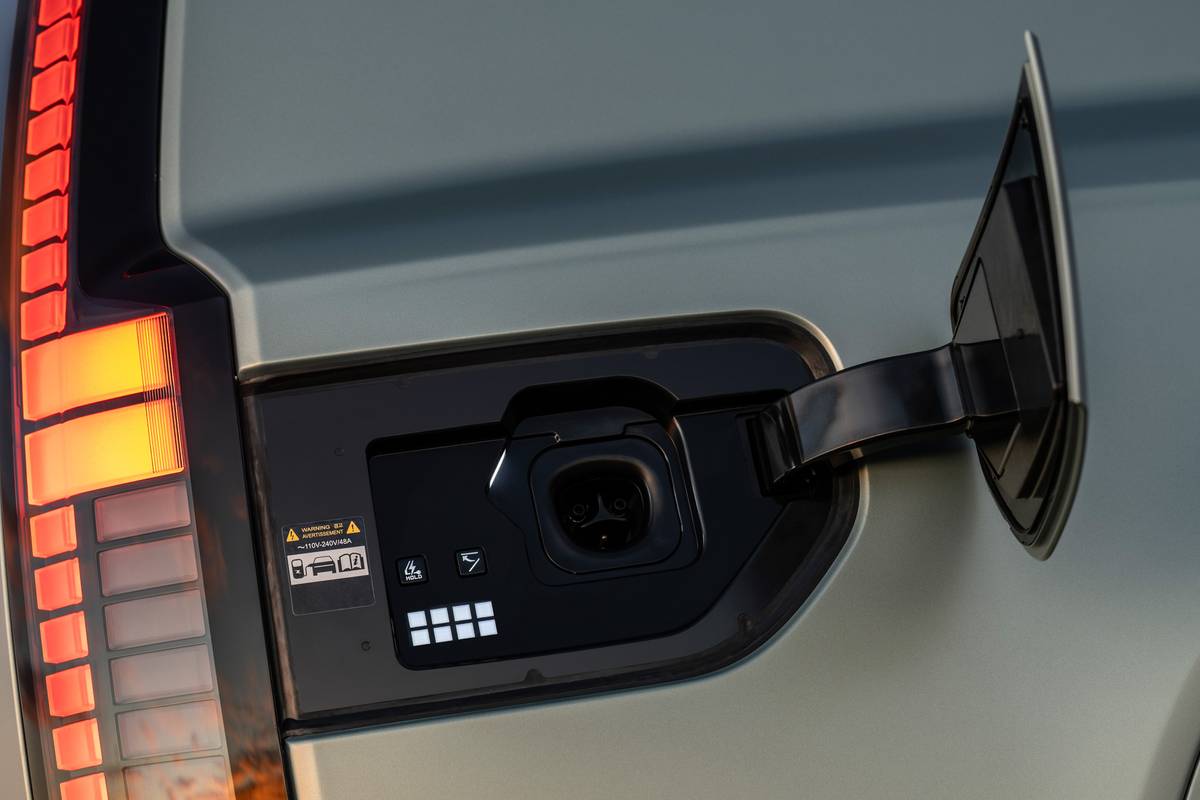
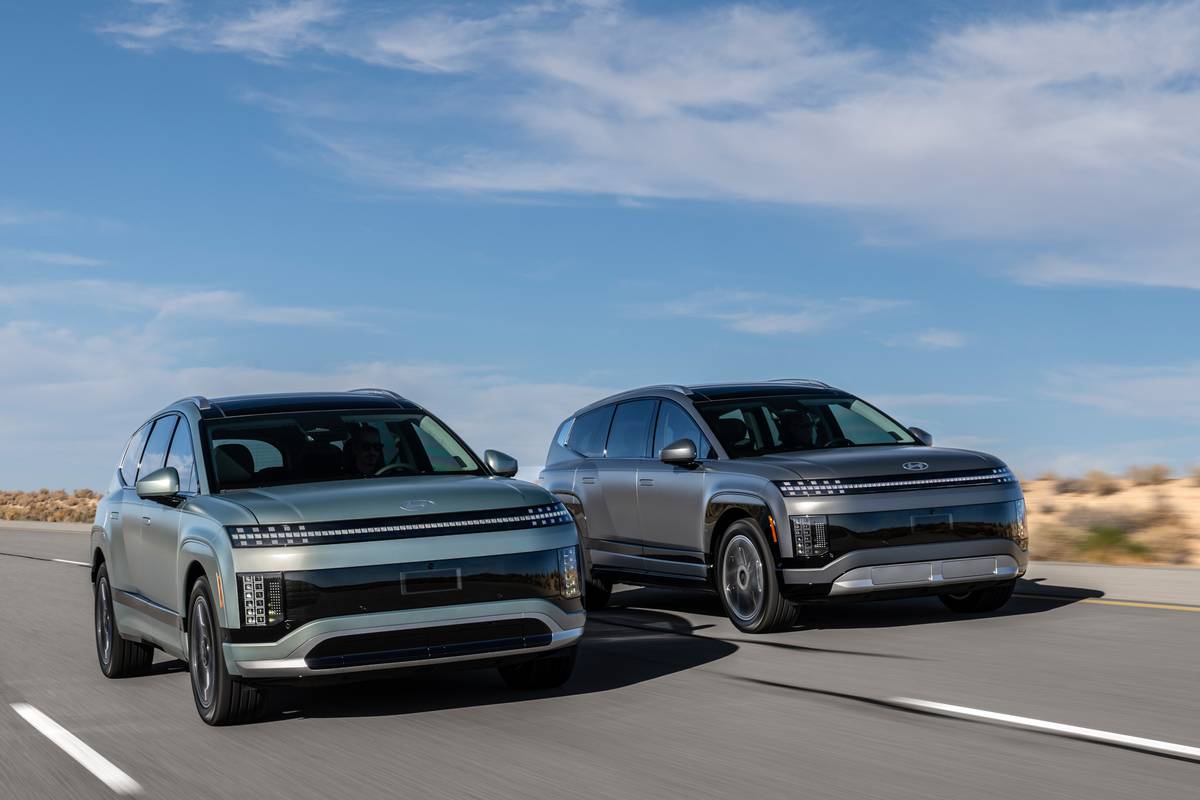
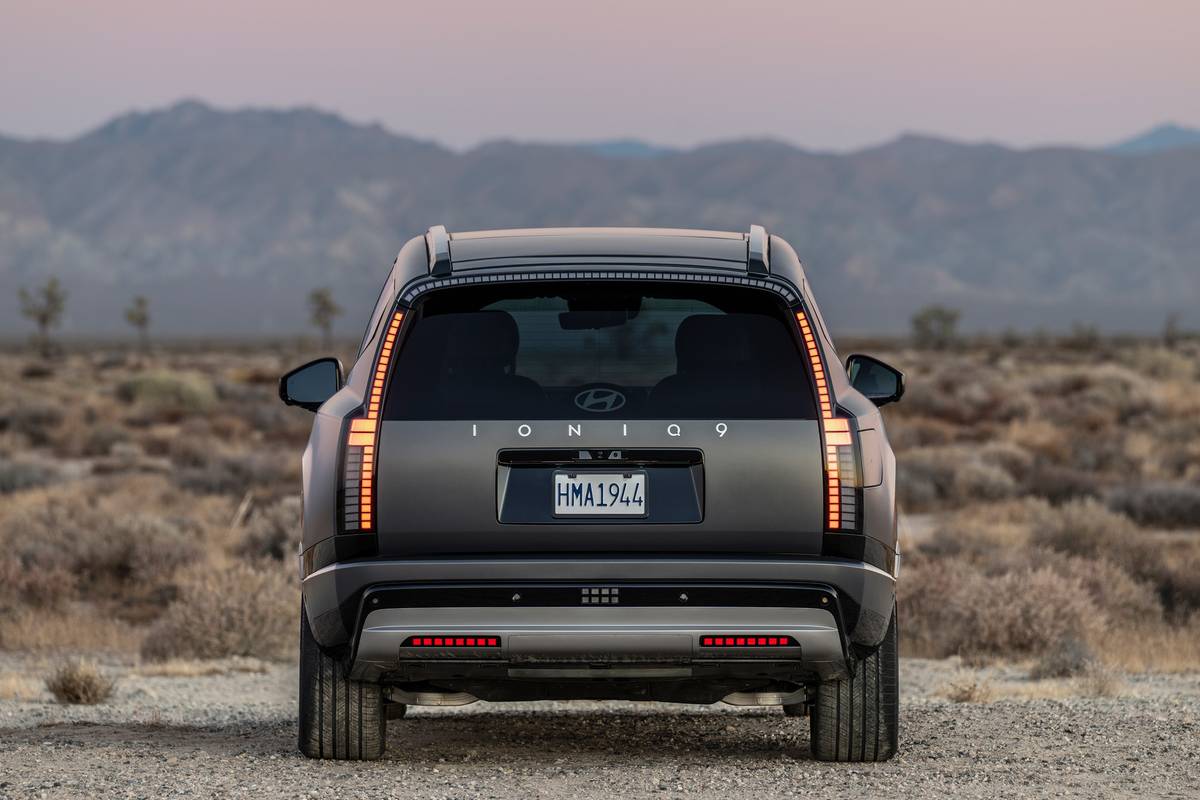
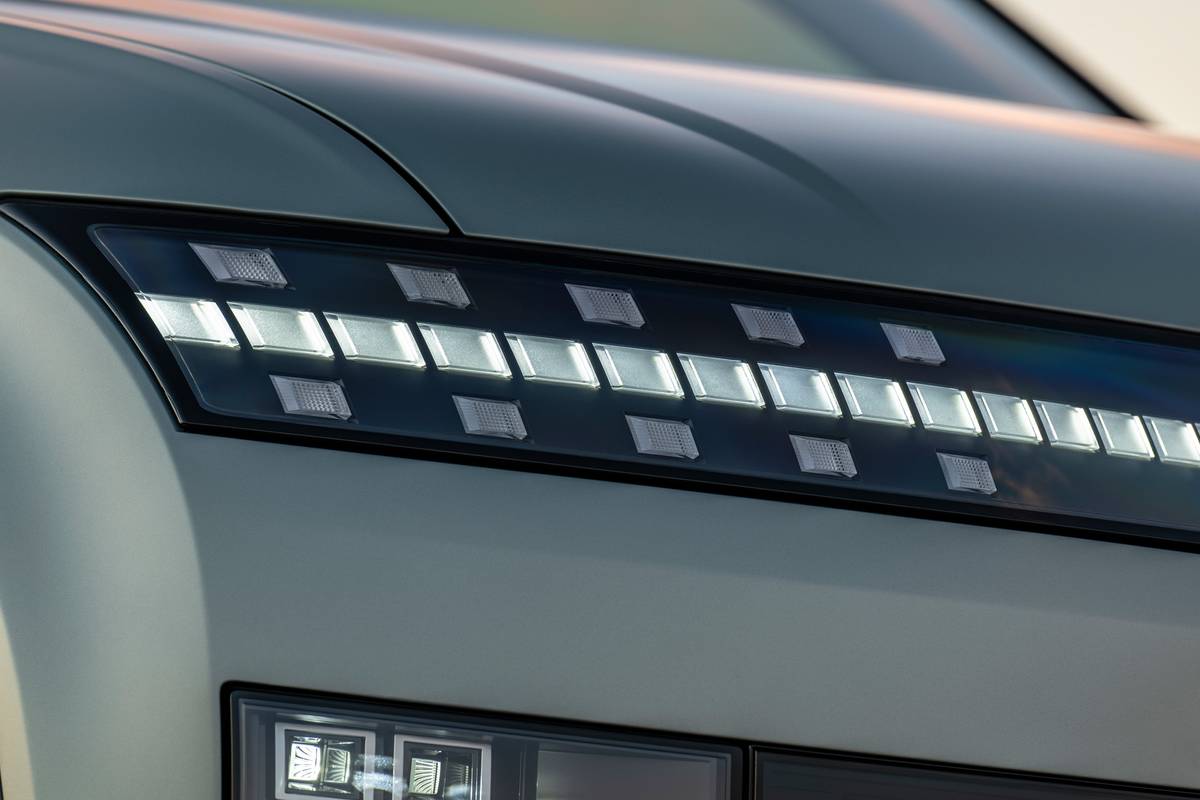

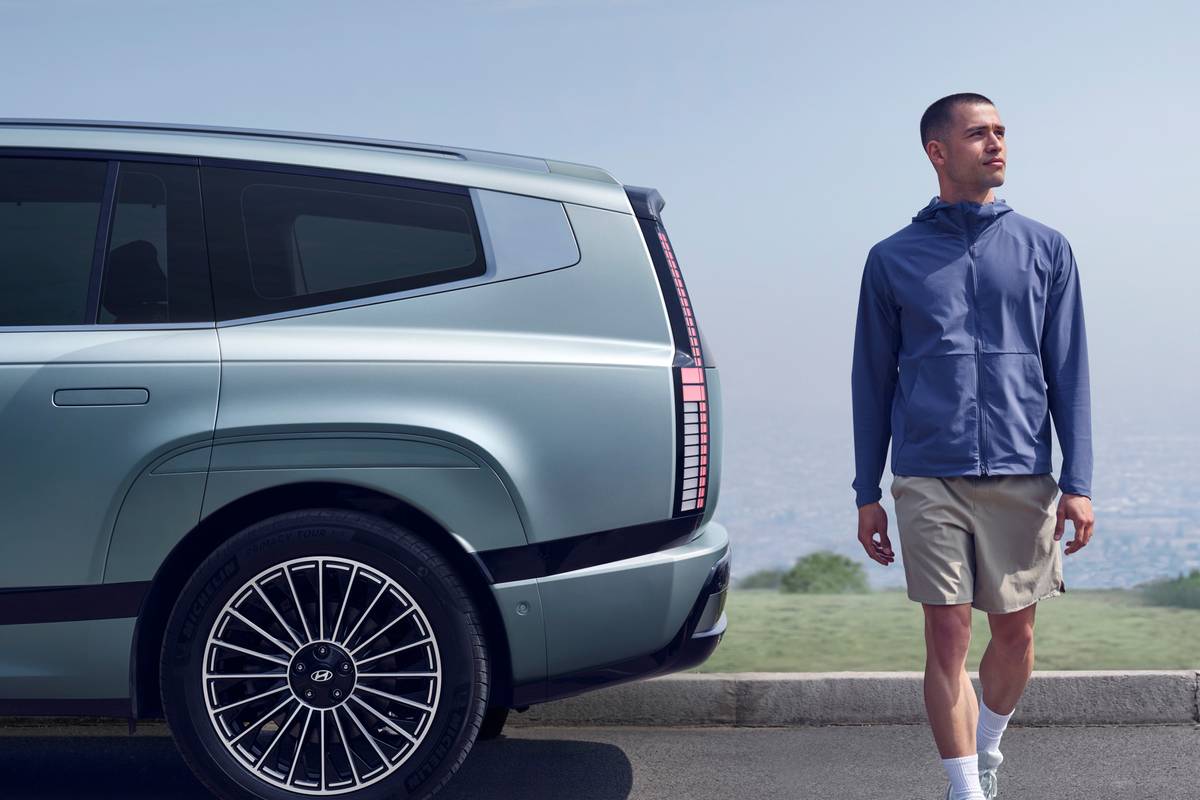

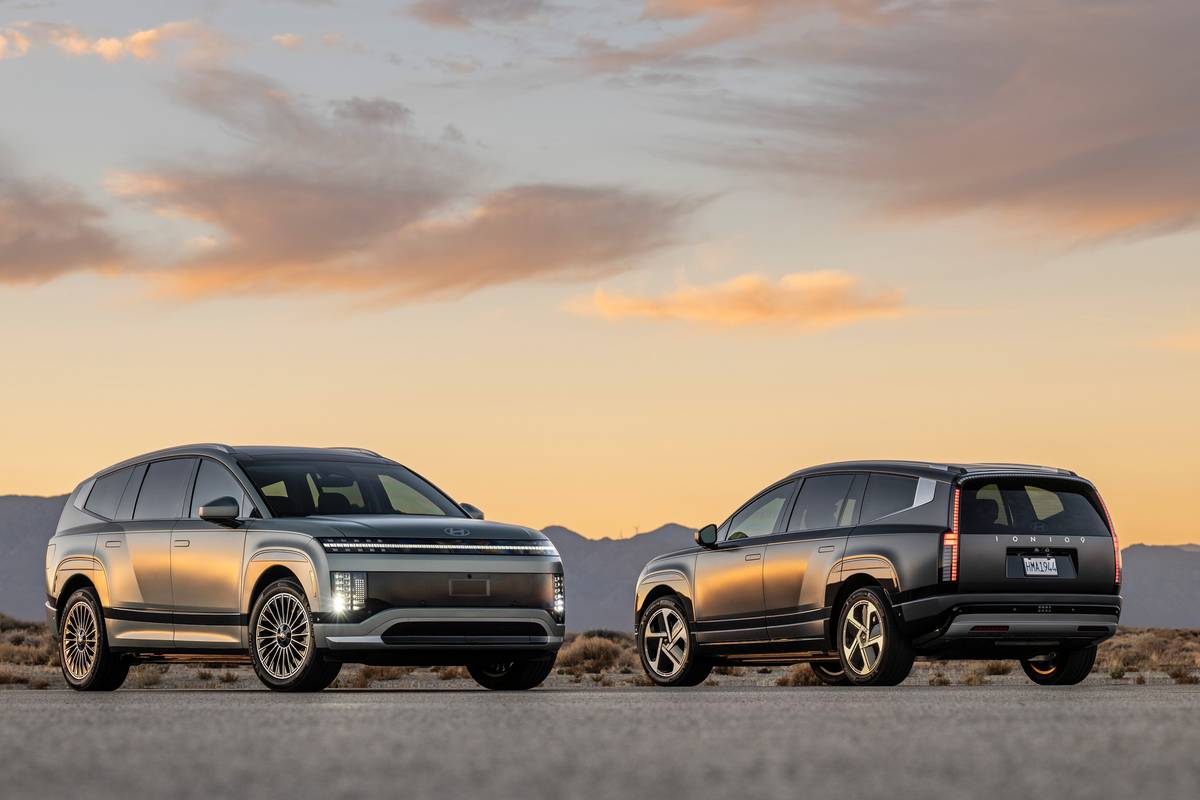
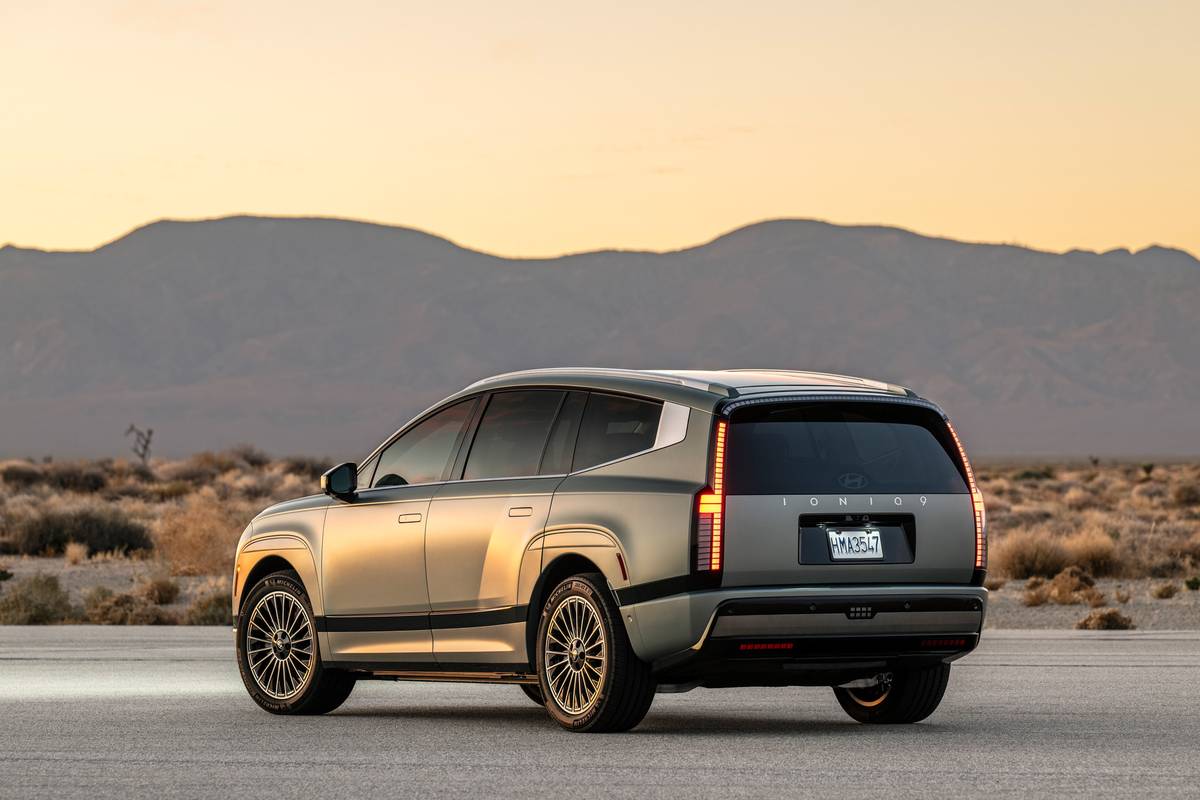
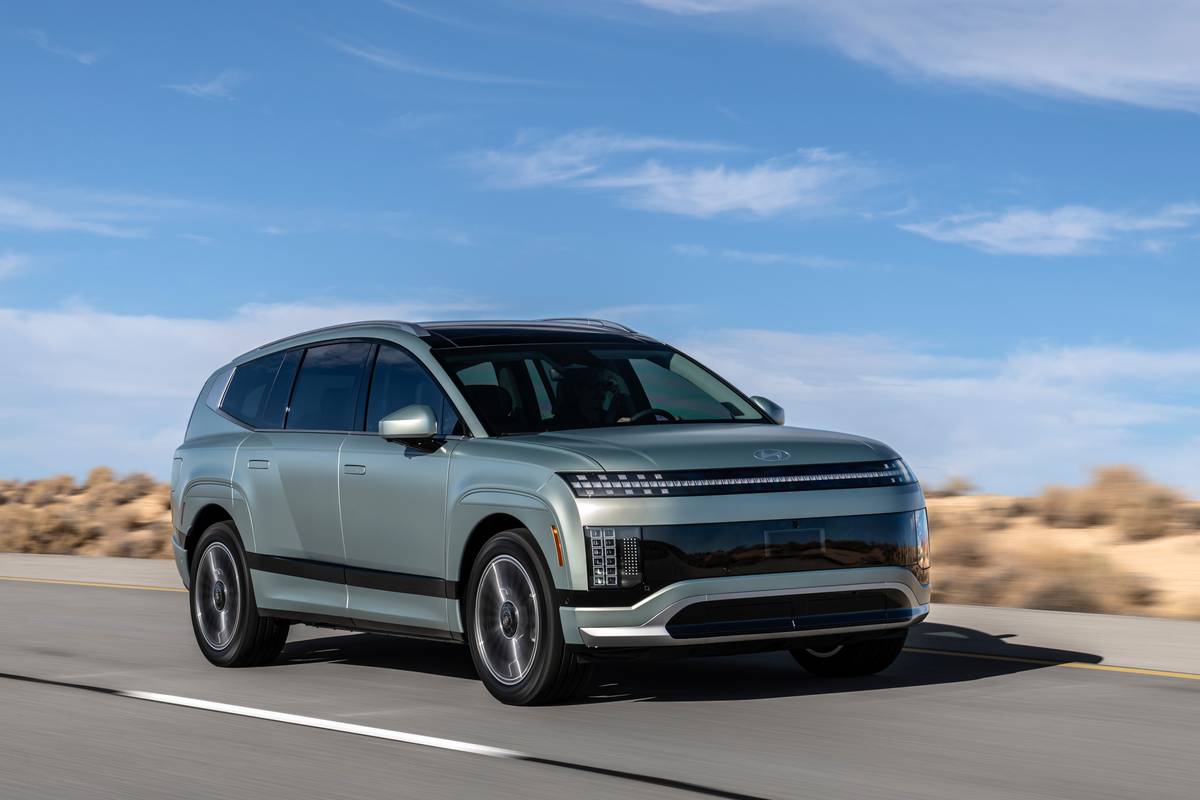
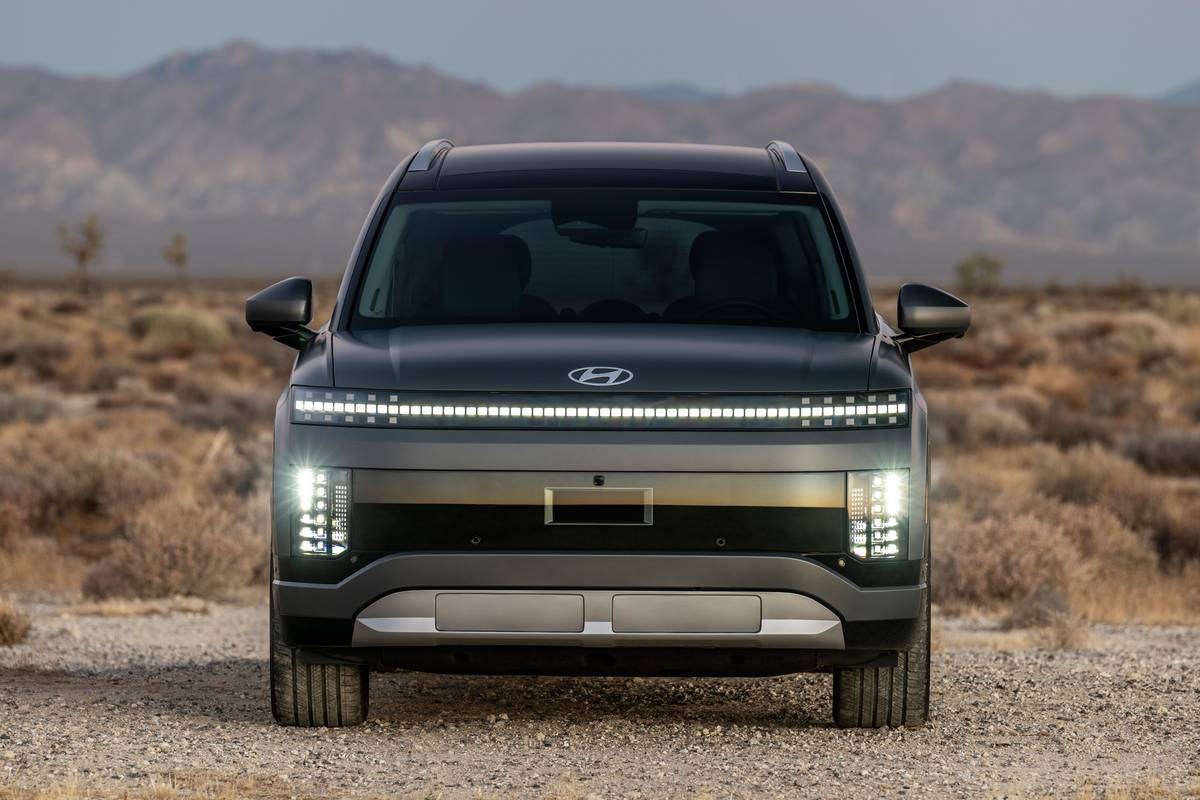
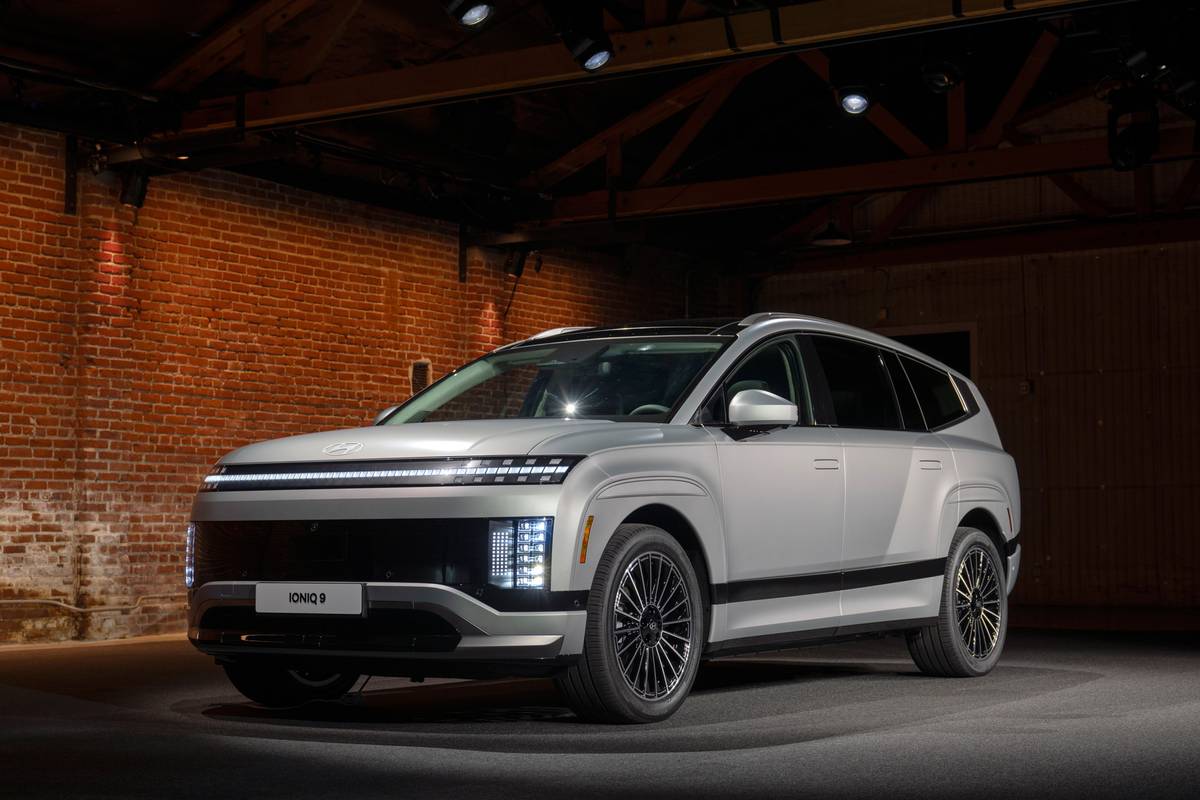
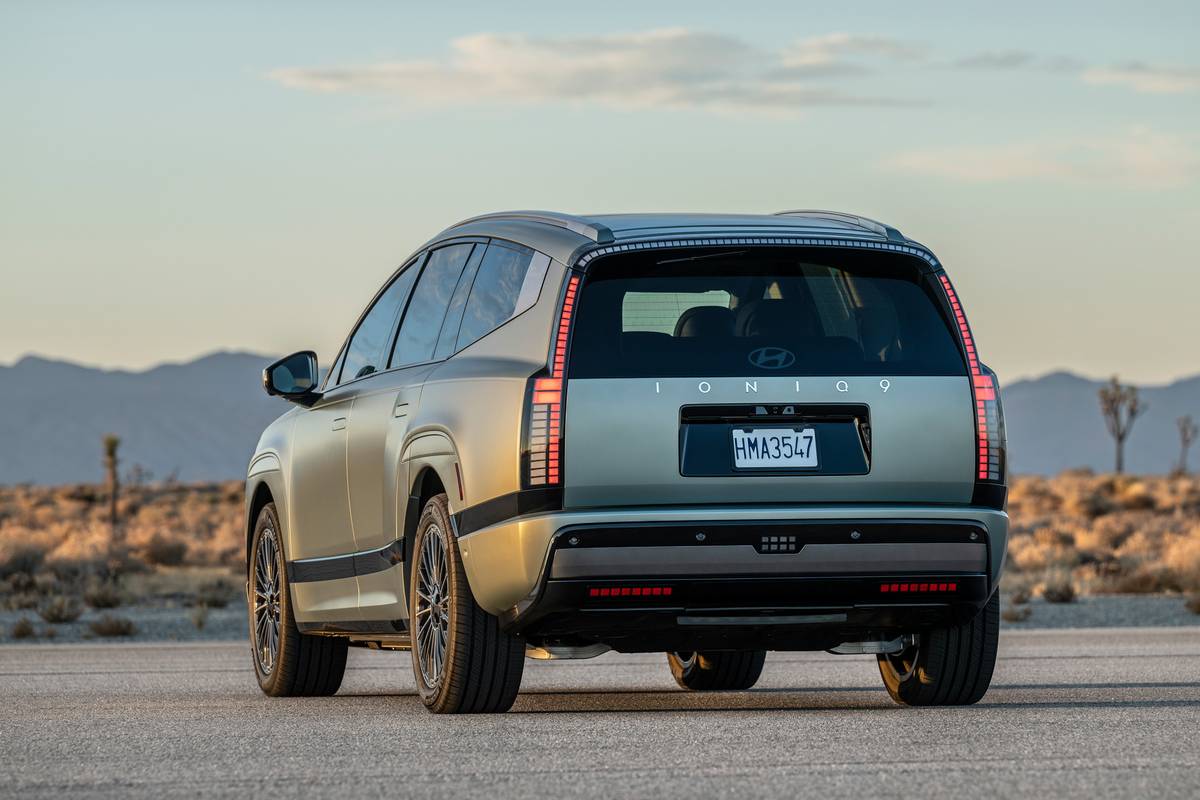
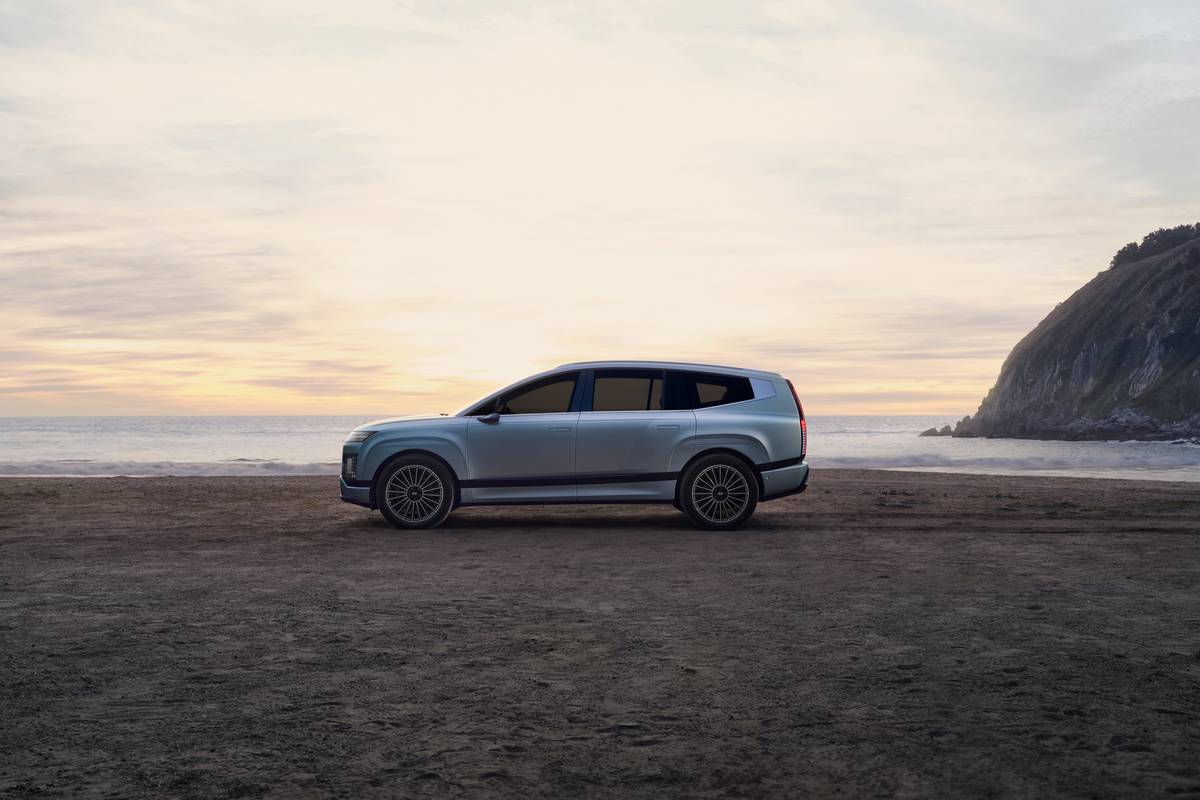
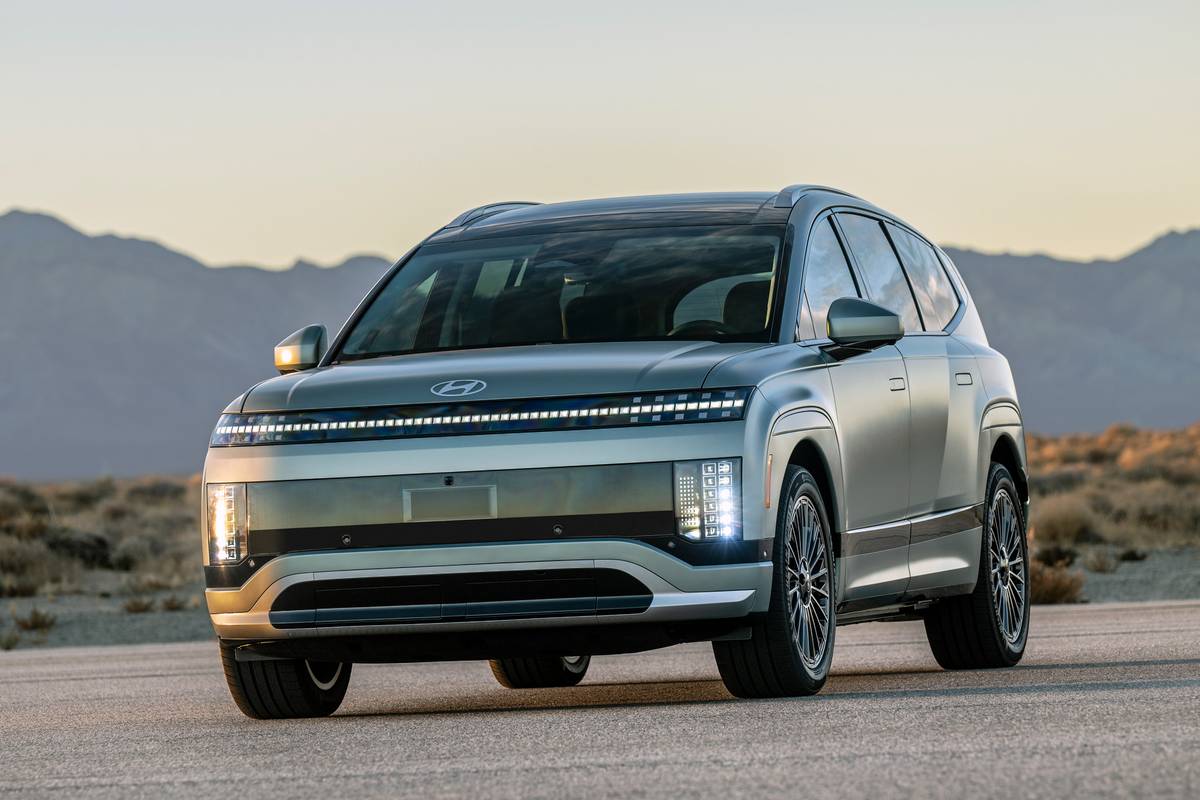
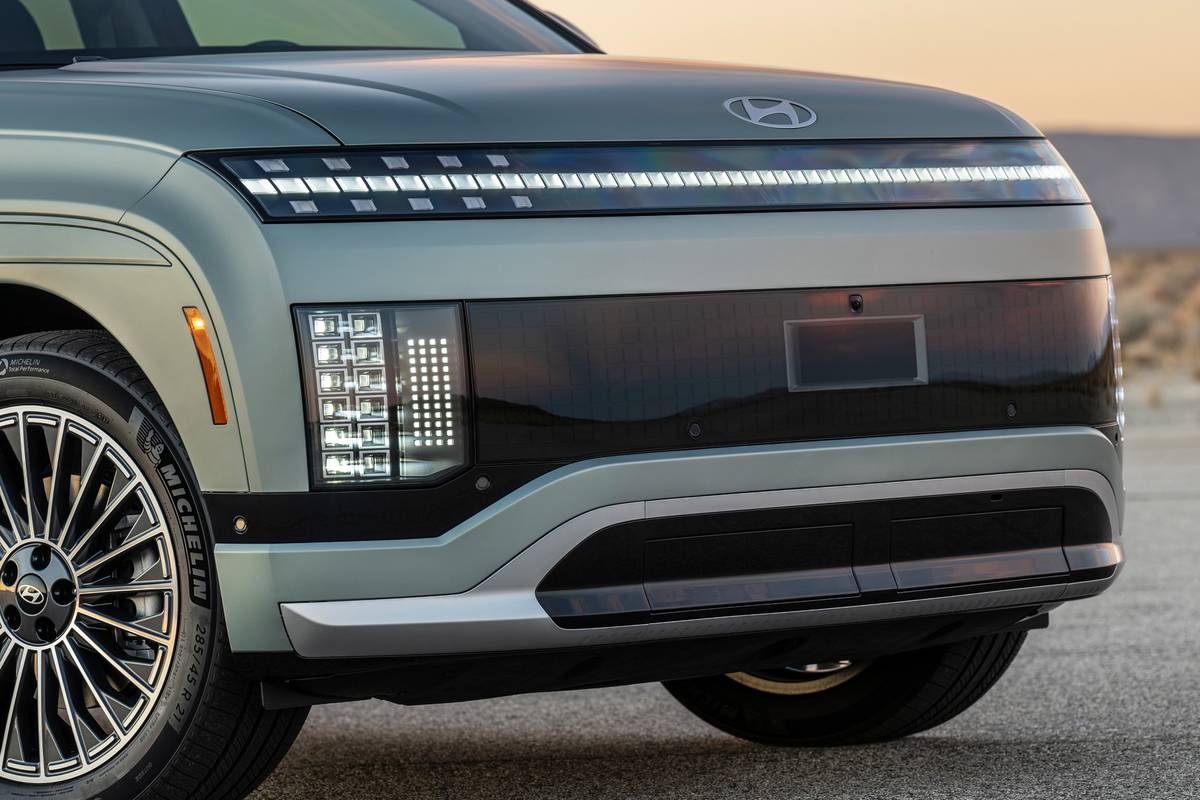
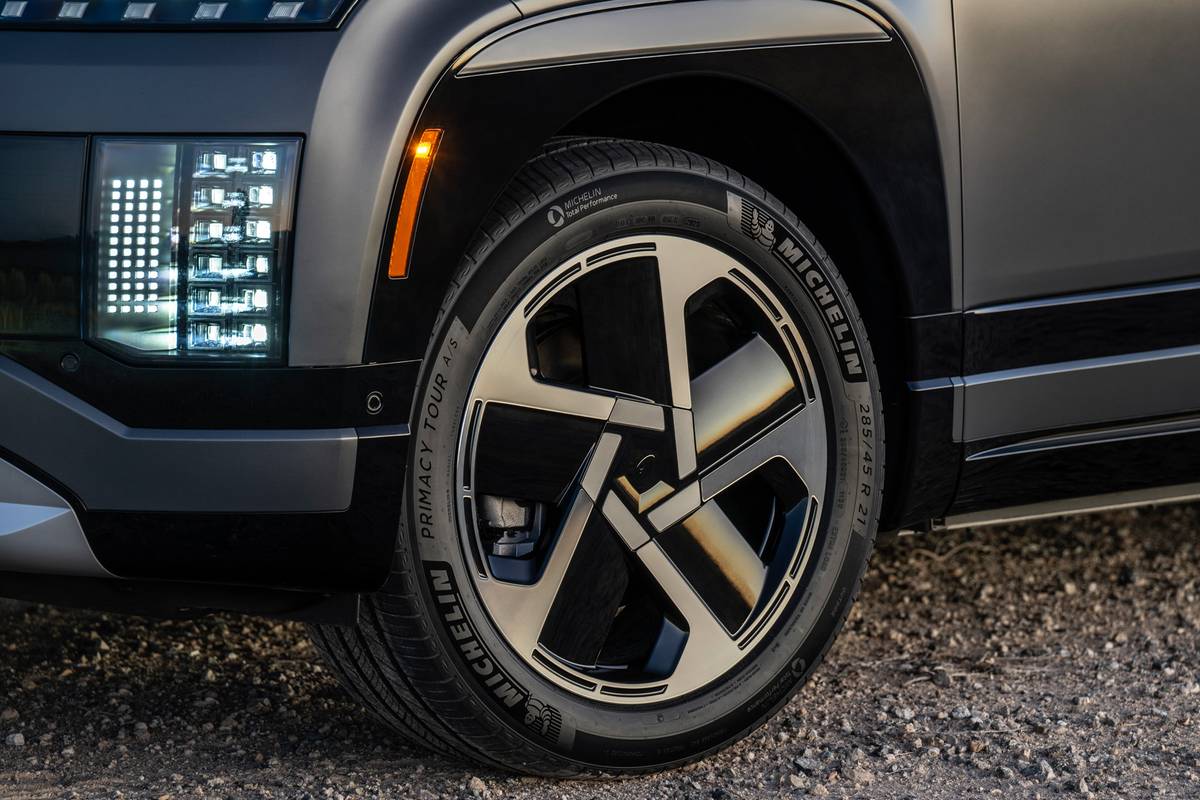
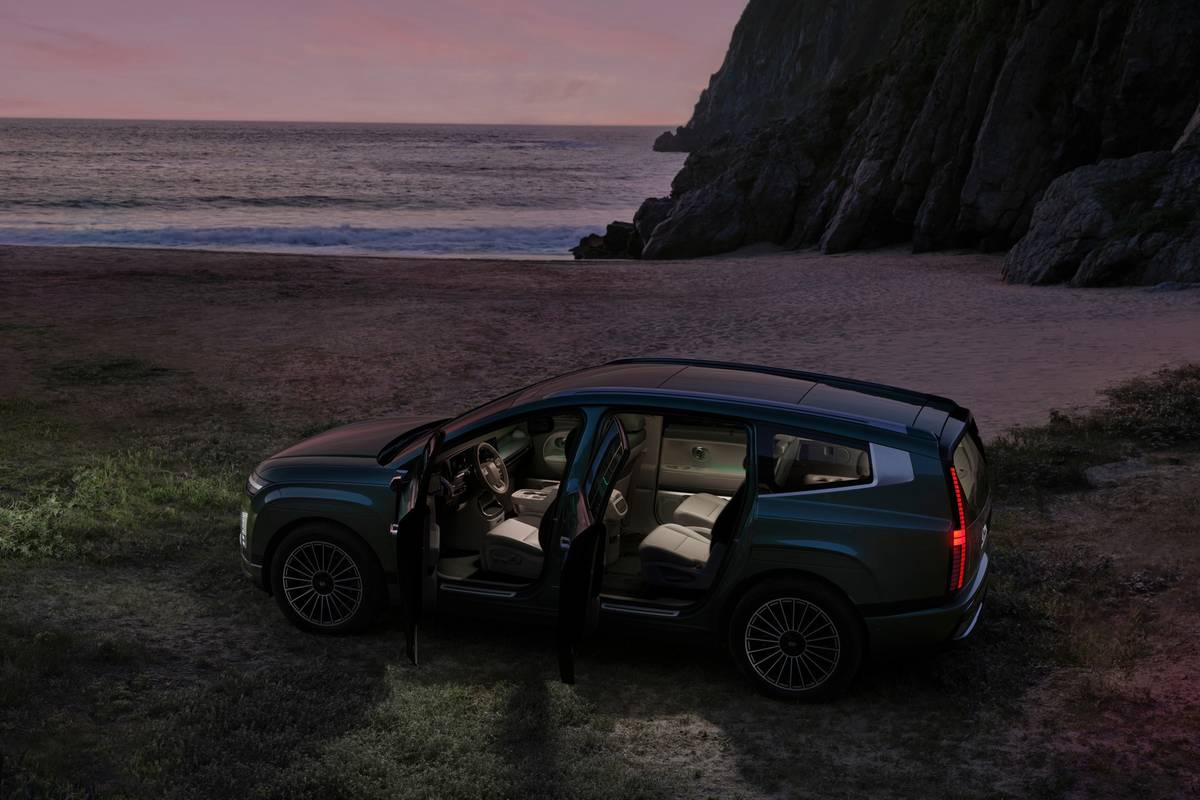
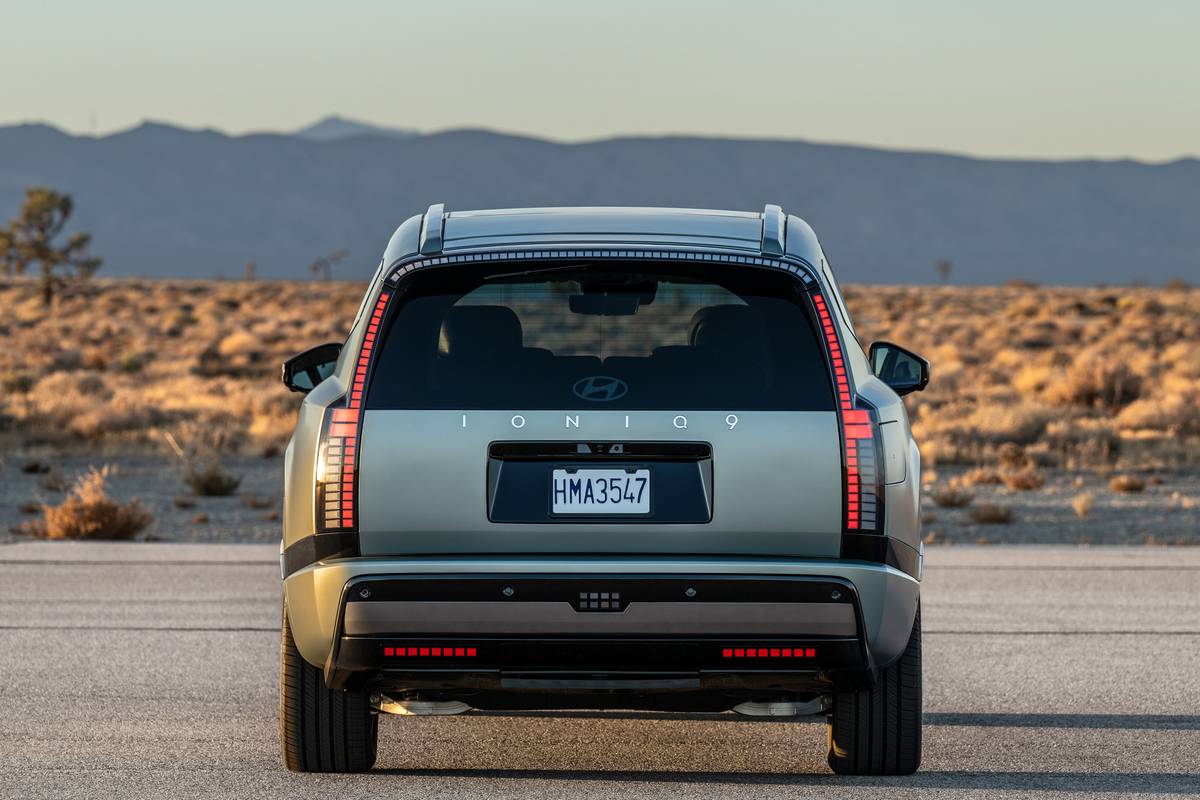
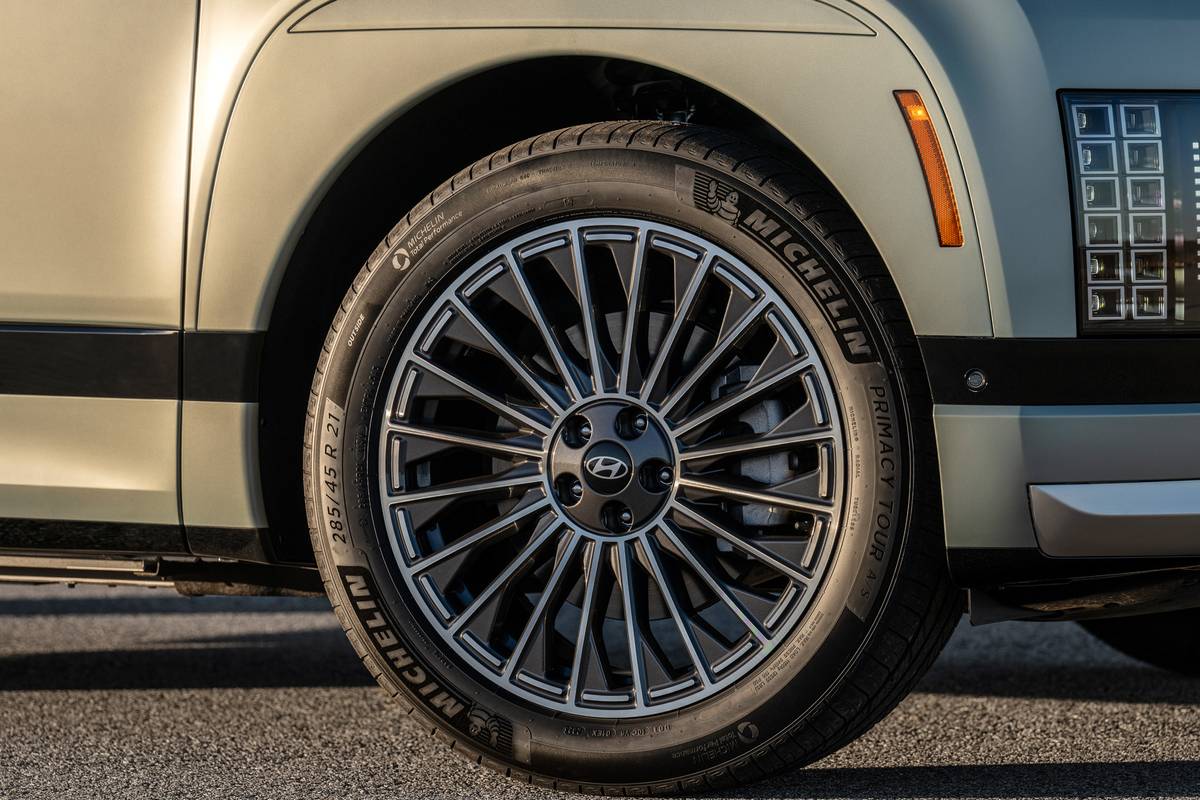
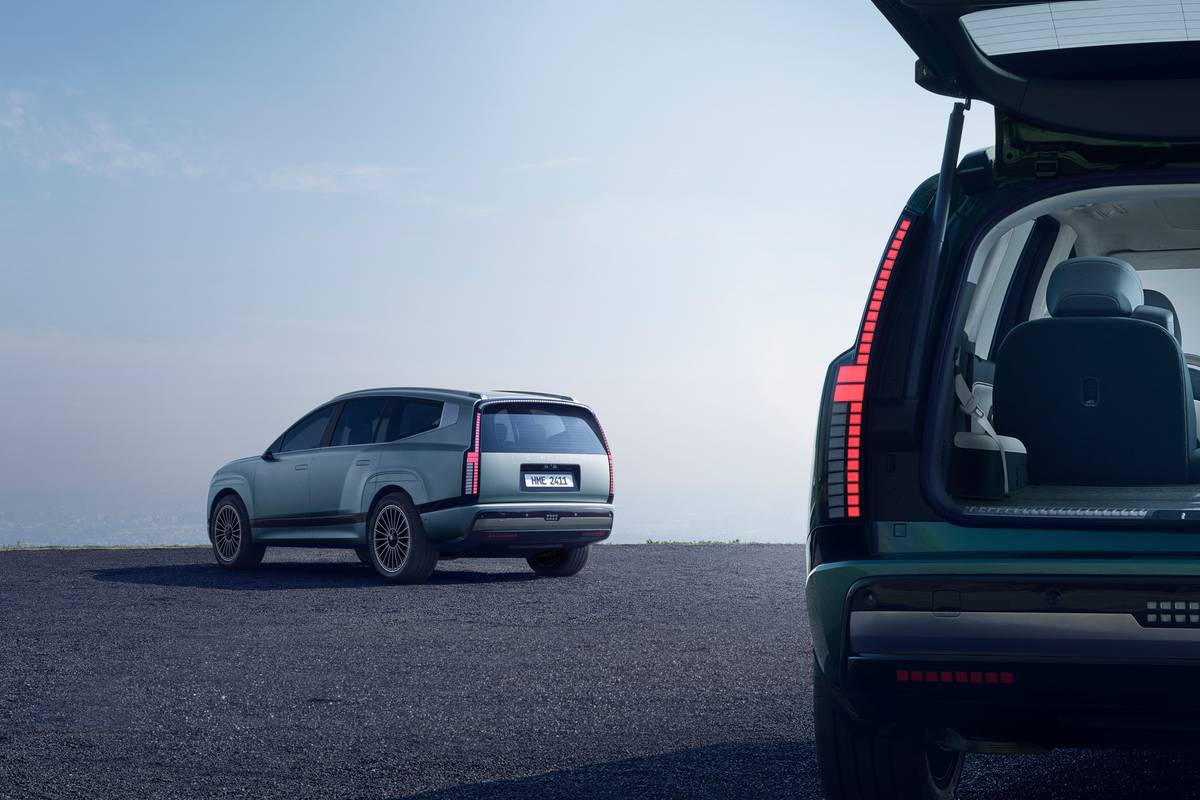
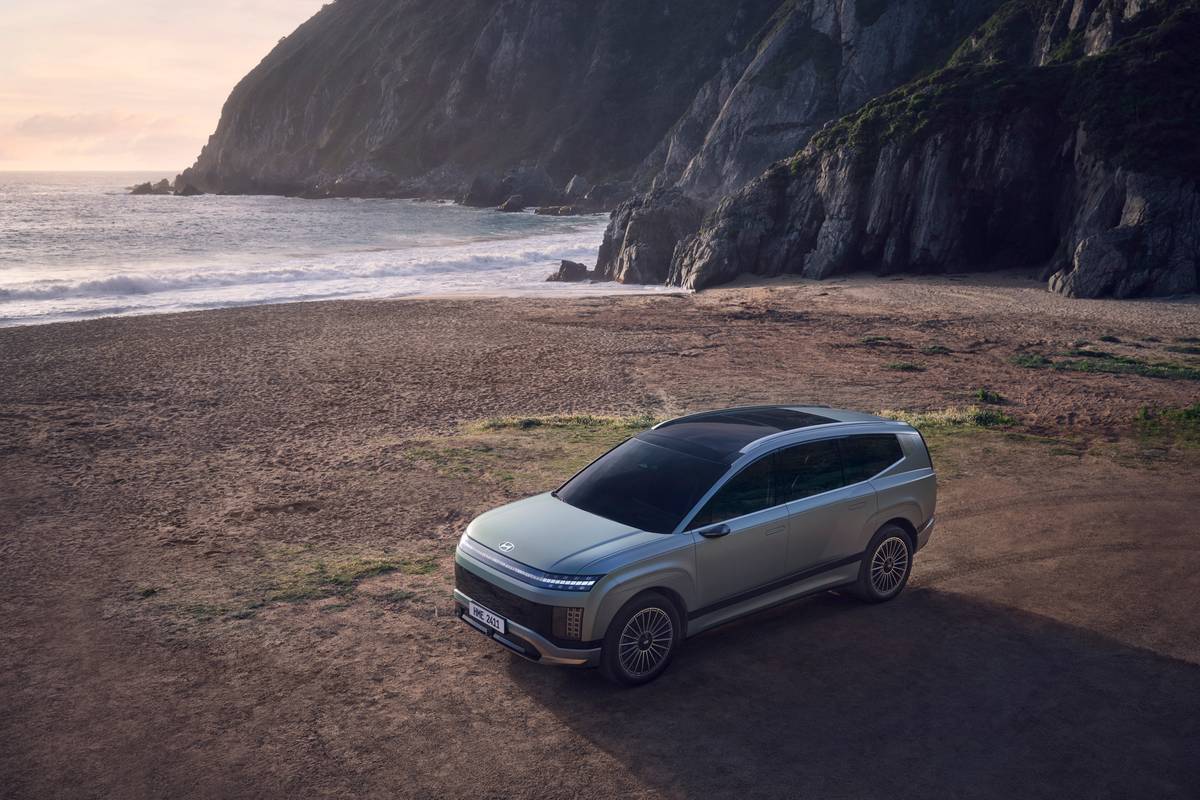
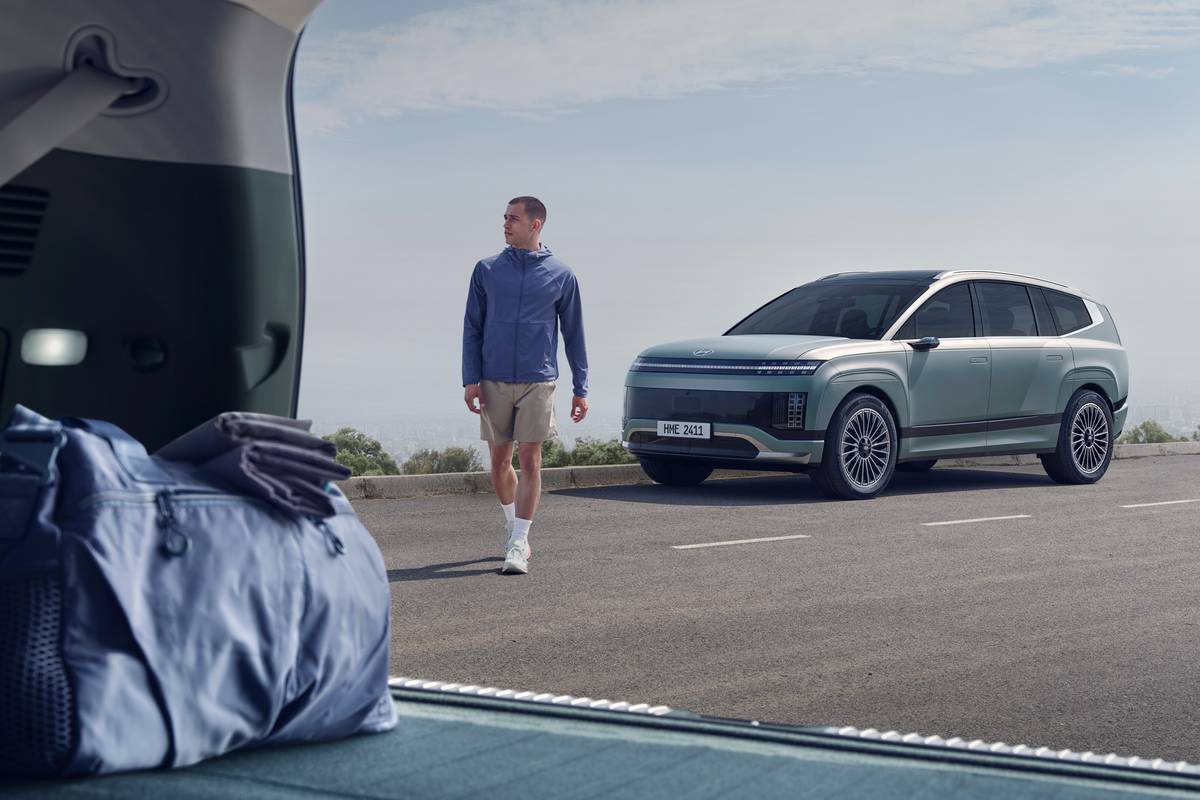
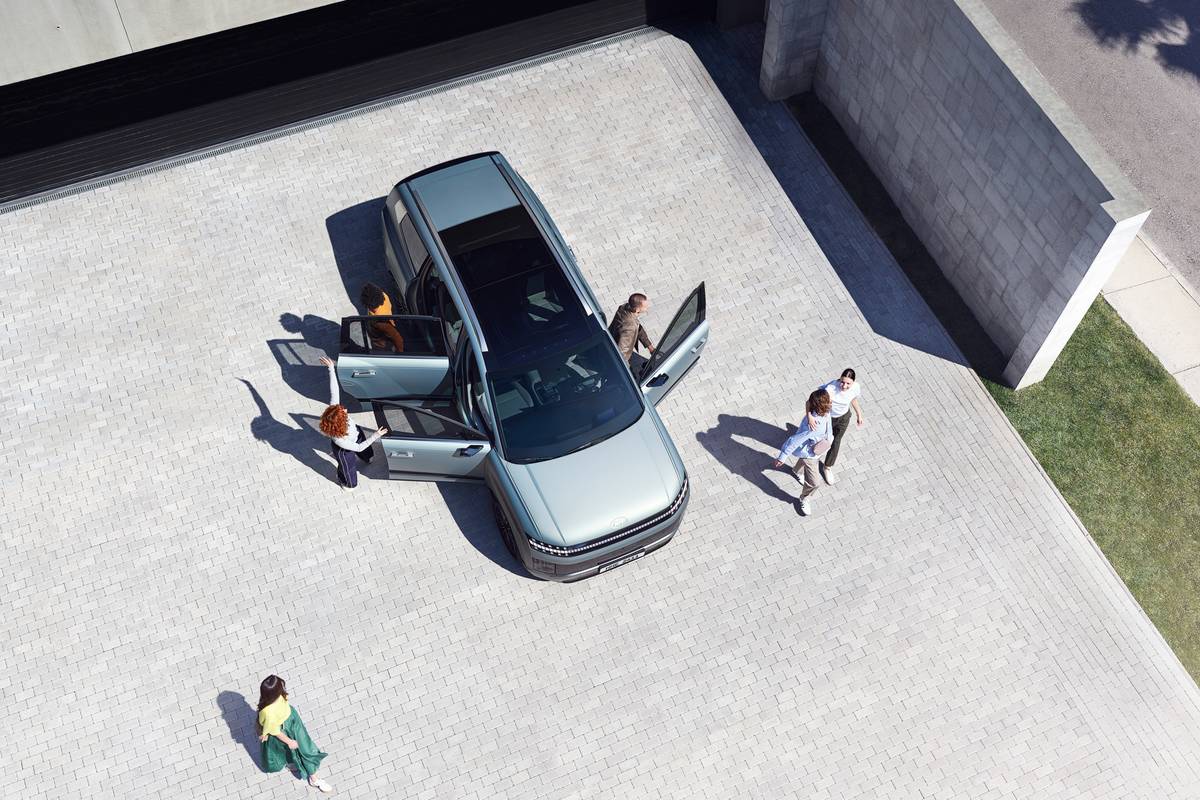
































An upgraded power inverter, aluminum fenders and quarter panels, and improved rear gear ratio for hill ascents also contribute to the Ioniq 9’s efficiency. The all-electric SUV also includes driving modes for different kinds of conditions, including Snow, Sand and Mud, plus an Auto Terrain Mode that can recognize the type of road terrain and adjust the vehicle’s settings accordingly. Dynamic torque vectoring helps maintain traction on different kinds of terrain as well as compensate for wind forces that might force the Ioniq 9 to shift around on the road.
The Ioniq 9 is available in both single- and dual-motor configurations. The long-range RWD variant has one rear 160-kW motor good for 215 hp, while the long-range AWD version has both that motor plus a 70-kW motor up front to produce a combined 303 hp. The Performance AWD version has one 160-kW motor on each axle outputting a combined 422 hp; it is capable of going from 0-60 mph in 4.9 seconds. The other versions are no slouches, either, as the long-range AWD variant can go from 0-60 mph in 6.2 seconds and the long-range RWD version in 8.4 seconds.
Just like the Kia EV9, the Hyundai Ioniq 9 can tow 3,500 pounds with RWD or up to 5,000 pounds with AWD. Inside, Hyundai says the Ioniq 9 has 21.9 cubic feet of cargo space behind the third row, which increases to 46.7 cubic feet with the third row folded down. It also features a frunk, which holds 3.1 cubic feet of cargo in RWD Ioniq 9s or 1.8 cubic feet in the AWD version.
Creature Comforts for Up to Seven
Our biggest concern when we saw the interior teaser image was that the Ioniq 9’s roofline might be too much of a fastback for taller occupants, but the full production-spec pics show an SUV that’s more squared off than we expected, with adults enjoying the back-row seats. We’ll have to get our tallest staffers to test it out to know for sure, so stay tuned for the full review. All seats sit on a flat floor, meaning the third row isn’t elevated on an awkward battery lump as it is in certain other electrified three-rows.
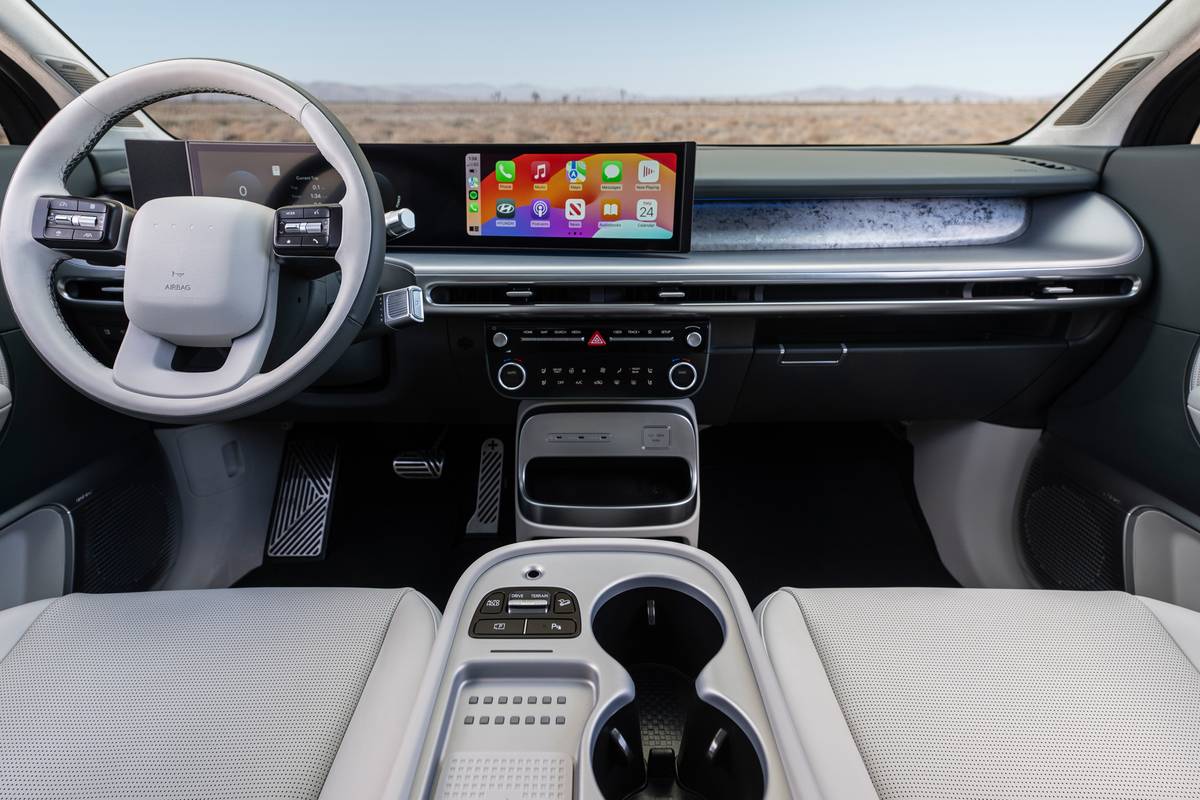
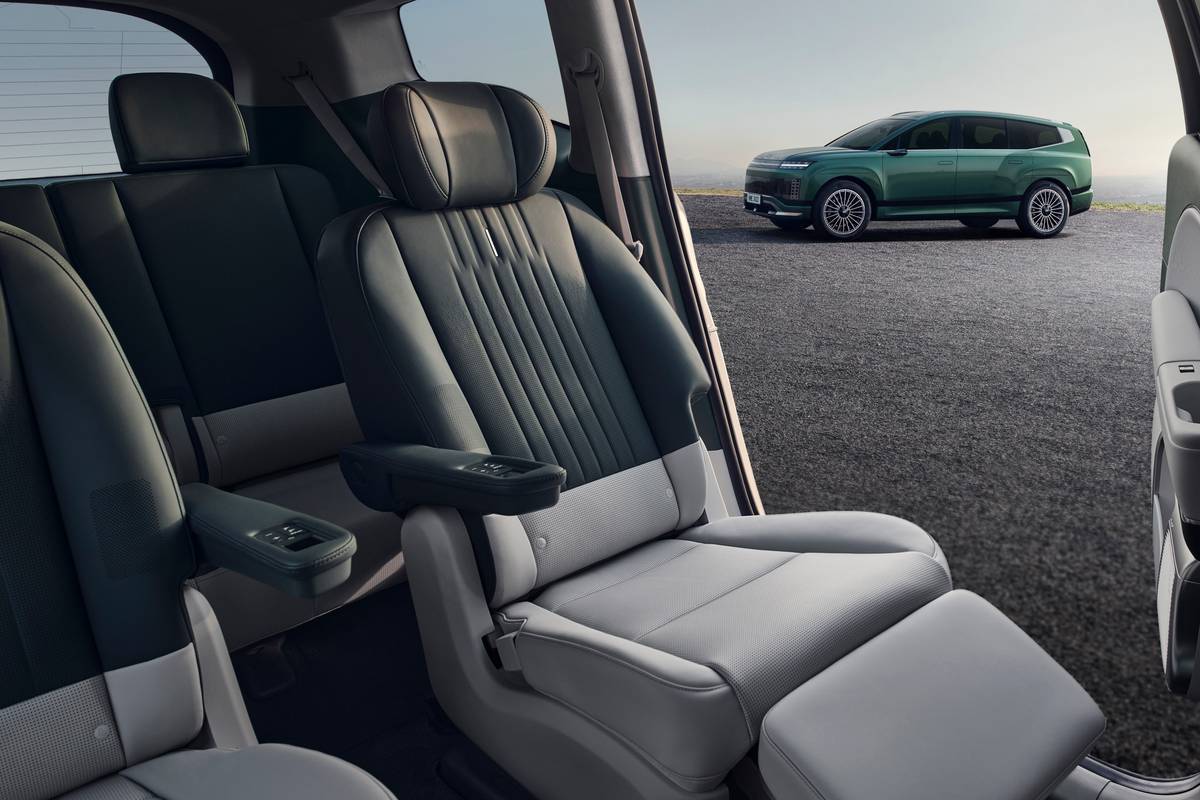



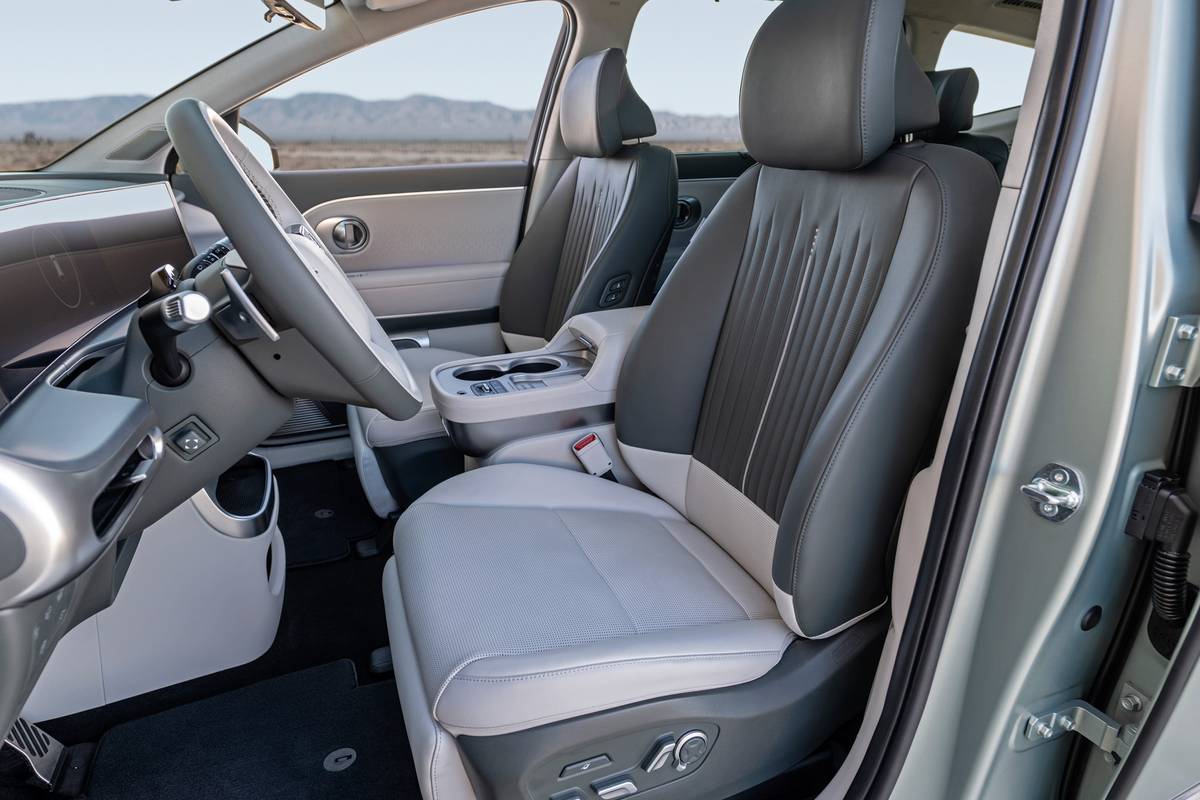

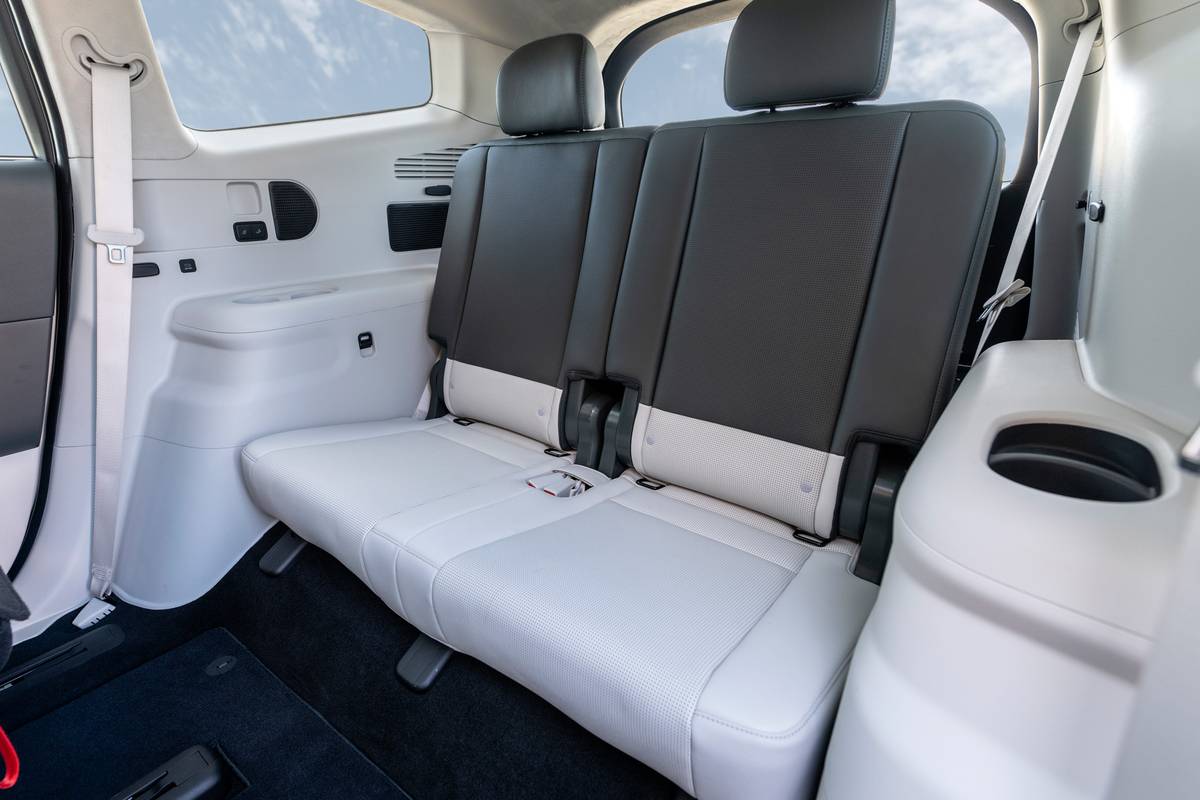





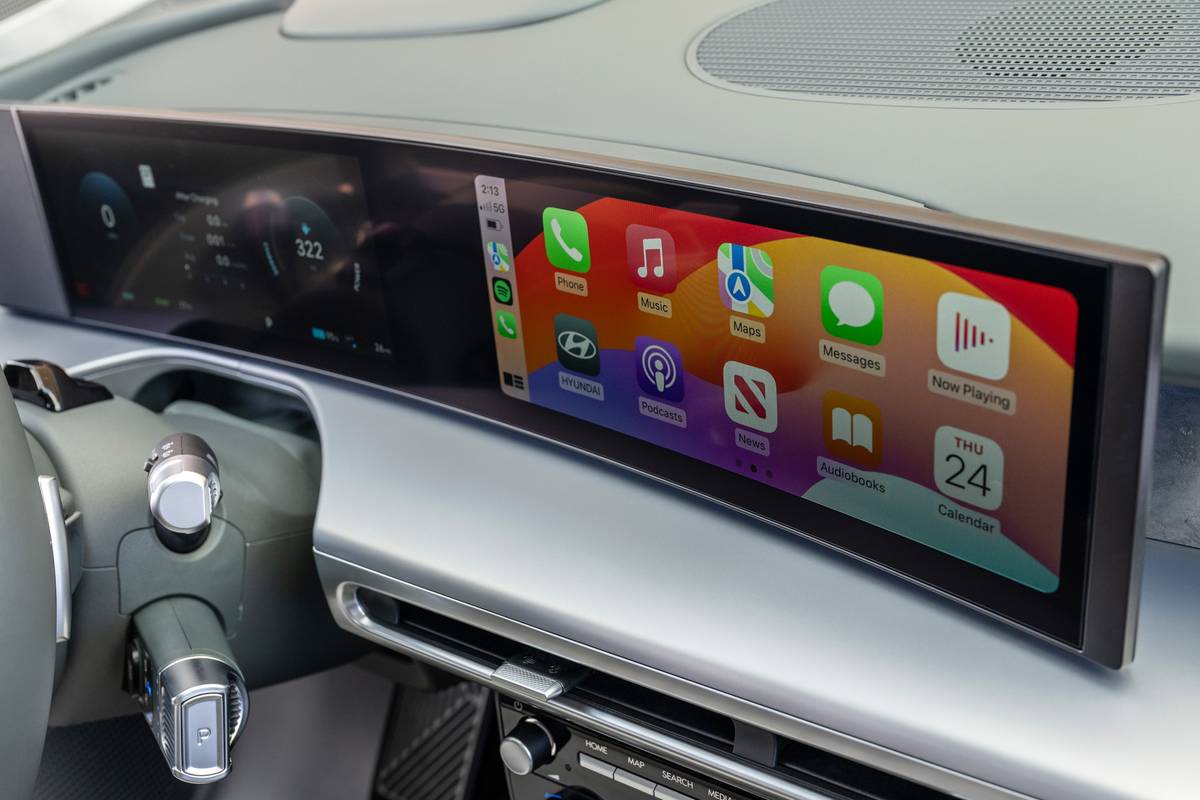

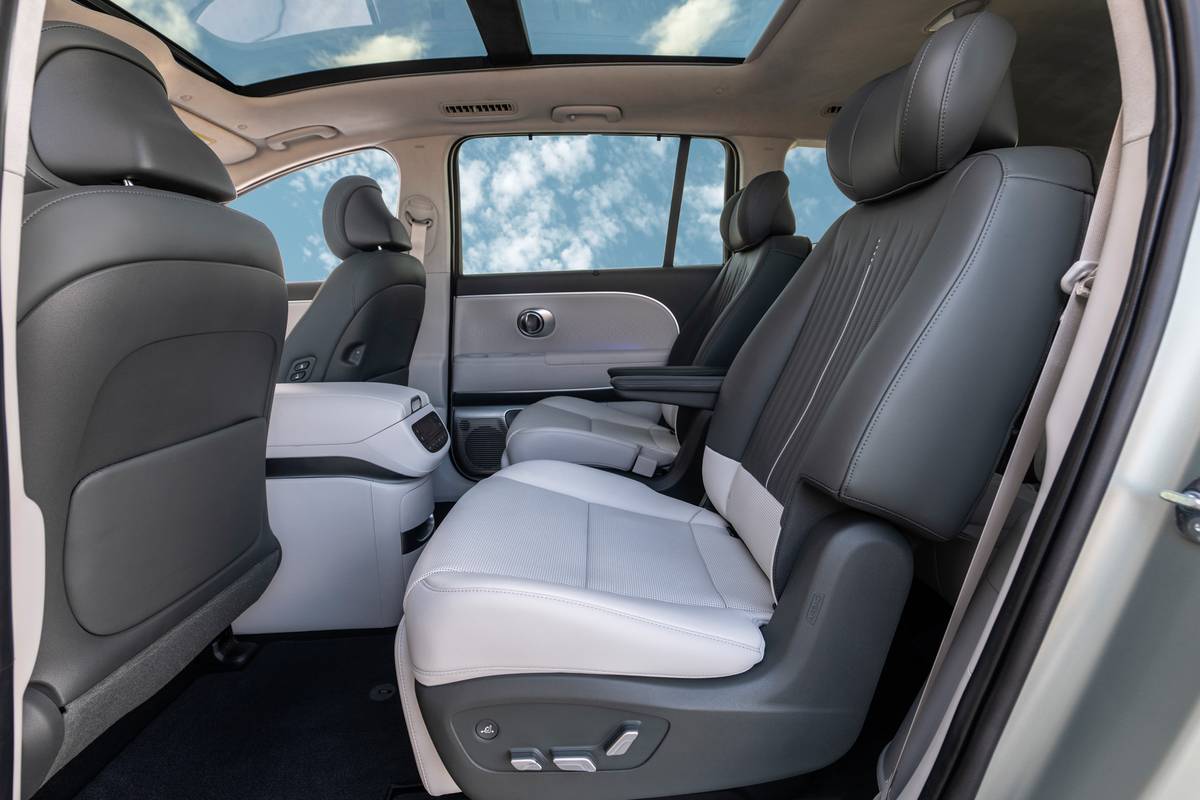
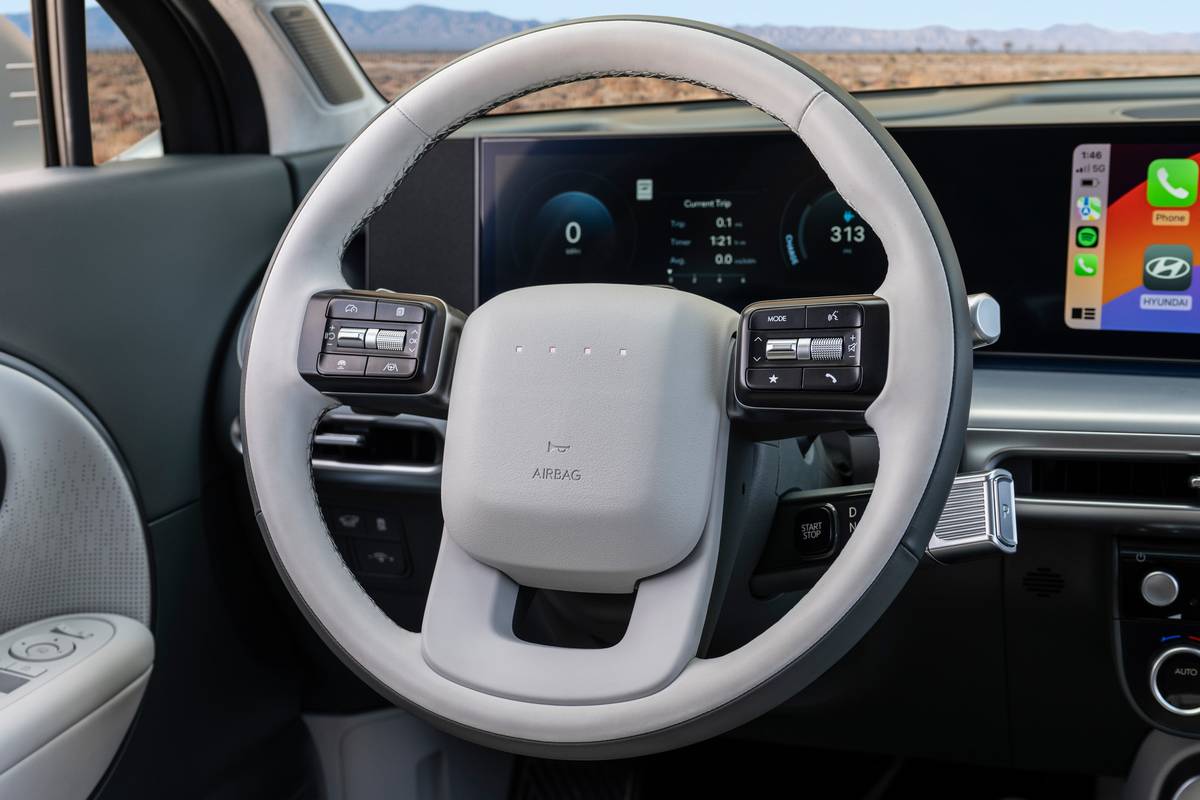
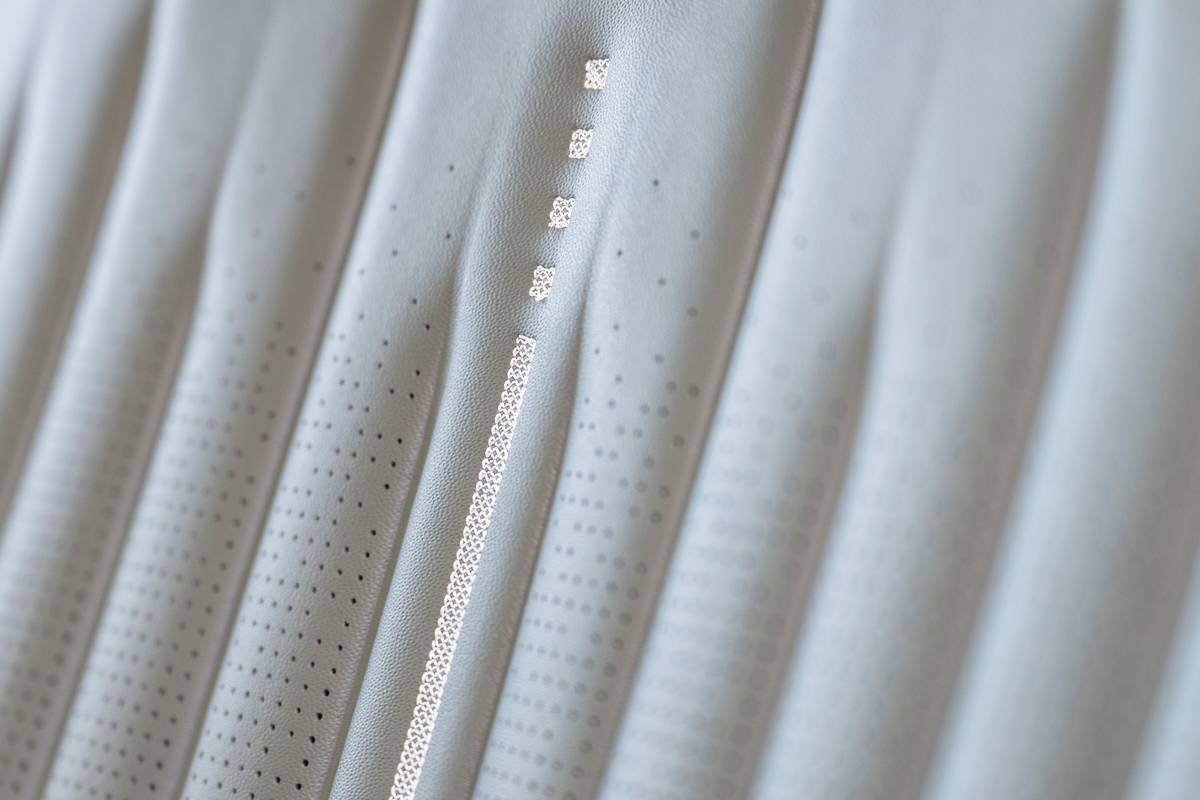
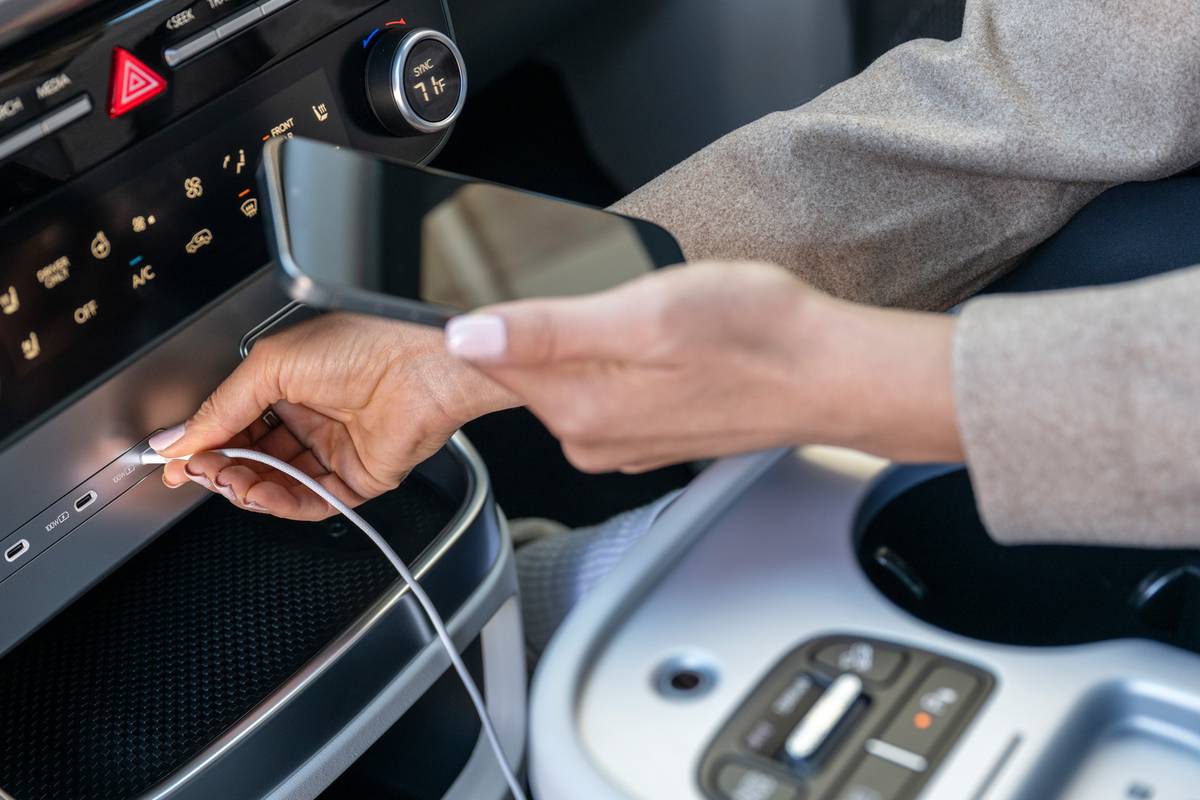
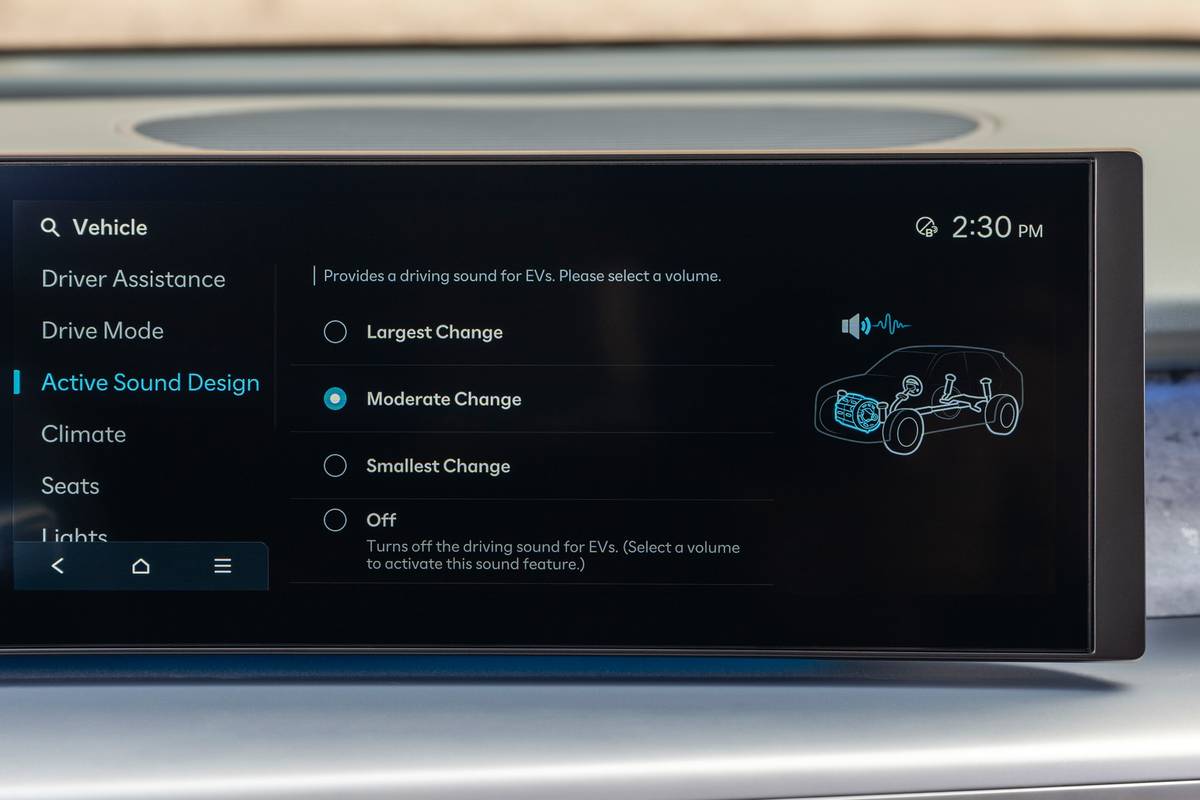
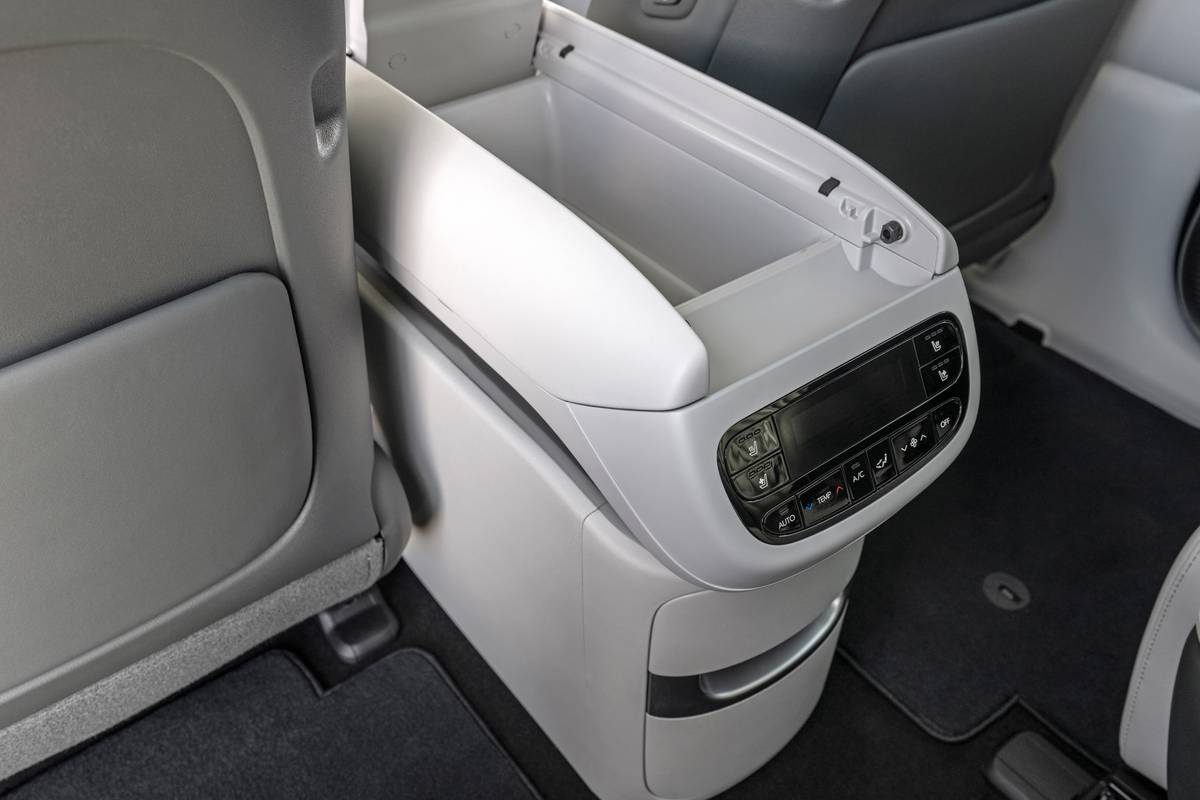



























The Ioniq 9 comes in both six- and seven-occupant configurations. Passengers can access the third row with the press of a button, which moves the second-row seat out of the way. Available first- and second-row massaging seats can fully recline and have extendable footrests. Both the front- and middle-row passengers can access the center console, which can flip open from both ends and move forward or backward by more than 7 inches, and 100-watt high-output USB-C ports are available for all three rows’ passengers. Ambient lighting, as well as special lighting patterns when opening the door, makes the Ioniq 9 feel somewhat lounge-like inside, and a panoramic moonroof is available.
Road noise is mitigated by an active noise cancellation system; acoustic glass; triple-sealing, sound-absorbing tire inserts; and A-pillar reinforcements. Self-leveling suspension dampers and special hydro-bushings help further isolate the occupants from vibrations while driving.
The Ioniq 9 also features a panoramic curved display that includes both the 12-inch digital instrument cluster and 12-inch central infotainment screen, button-activated AI-powered voice recognition and assistant, EV route planning, a digital key and wireless charging pad. A Features on Demand app store lets you add extra upgrades and applications on the go, and the Ioniq 9 is capable of over-the-air system updates, as well. An eight-speaker sound system is standard, with a 14-speaker Bose audio system with surround sound available, and the Ioniq 9 outputs simulated EV driving sounds over the audio system to give you a better reference as to what the vehicle is doing.
Dual-zone climate control allows rear and front occupants to control heating and air conditioning separately, or for campers in the rear, to conserve the SUV’s battery by only using the rear climate control.
Safety Features
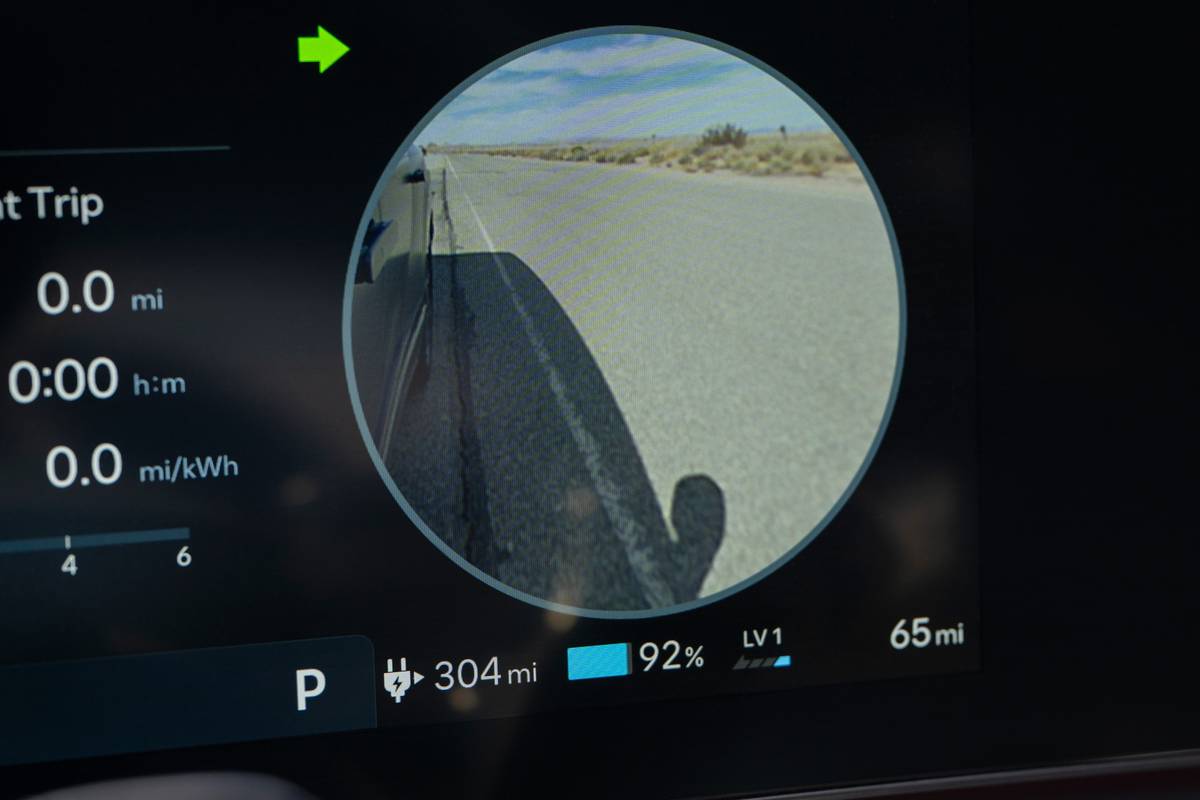
The Ioniq 9 features a comprehensive suite of safety tech and driver assists, including blind spot collision avoidance, forward collision warning with automatic emergency braking, rear cross-traffic collision avoidance, lane departure steering assist, lane-centering steering, adaptive cruise control, rear occupant alerts and parking sensors. Its pixel-inspired headlights are more than just pleasing to the eyes — they’re also adaptive to avoid blinding oncoming traffic even when the high beams are on. Hyundai says it has reinforced the body to better protect the battery underneath the passenger area, as well.
A 360-degree camera system, parking collision avoidance and remote parking assist are available safety upgrades. Hyundai’s helpful blind spot monitor that displays in the instrument cluster when you hit the blinker is available.
Pricing and Availability
Production of the Ioniq 9 starts in mid-2025 to be sold as a 2026 model; the specific on-sale date will be announced closer to the start of production. The vehicle will be produced in the U.S., so Hyundai expects it to qualify for the full $7,500 federal EV tax credit if the program isn’t modified or discontinued.
Pricing will be announced closer to the on-sale date, but we expect it to follow the example set by Hyundai and Kia’s gas-powered three-row SUVs. The Hyundai Palisade and Kia Telluride are similarly priced, but the starting price for the Hyundai is only $630 more expensive than the Kia. For 2025, the EV9 starts at $56,395, so we expect the Ioniq 9 to land somewhere slightly higher than that (all prices include destination fees) .
More From Cars.com:
- Hyundai Teases Ioniq 9 Electric Three-Row SUV
- Hyundai Provides Peek of Ioniq 9 Electric SUV’s Interior
- 2024 Hyundai Palisade Review: Still the Champ
- 2024 3-Row SUV Challenge: Repeat Champ Hyundai Palisade Proves Hard to Beat
- How Well Does the Kia EV9 Handle Family Duty?
Related Video:
Cars.com’s Editorial department is your source for automotive news and reviews. In line with Cars.com’s long-standing ethics policy, editors and reviewers don’t accept gifts or free trips from automakers. The Editorial department is independent of Cars.com’s advertising, sales and sponsored content departments.

News Editor Stef Schrader joined Cars.com in 2024 but began her career in automotive journalism in 2013. She currently has a Porsche 944 and Volkswagen 411 that are racecars and a Mitsubishi Lancer GTS that isn’t a racecar (but sometimes goes on track anyway). Ask her about Fisher-Price Puffalumps.
Featured stories
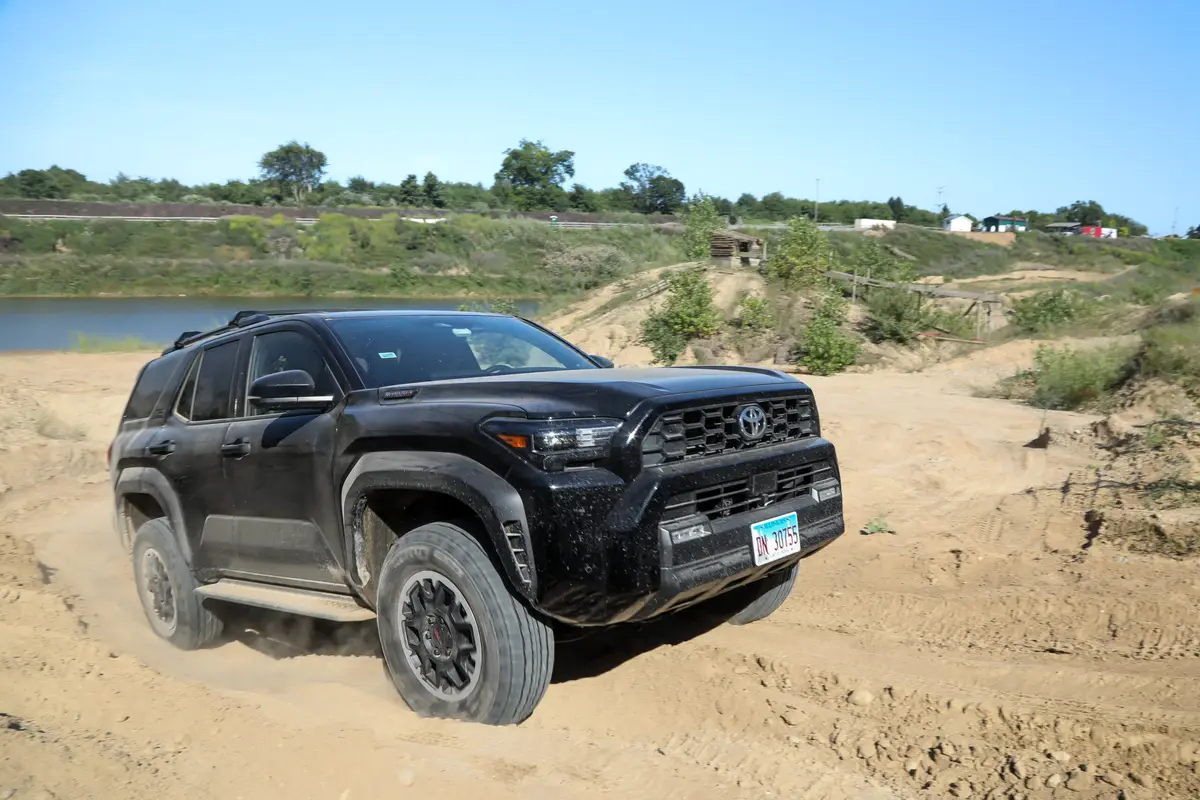
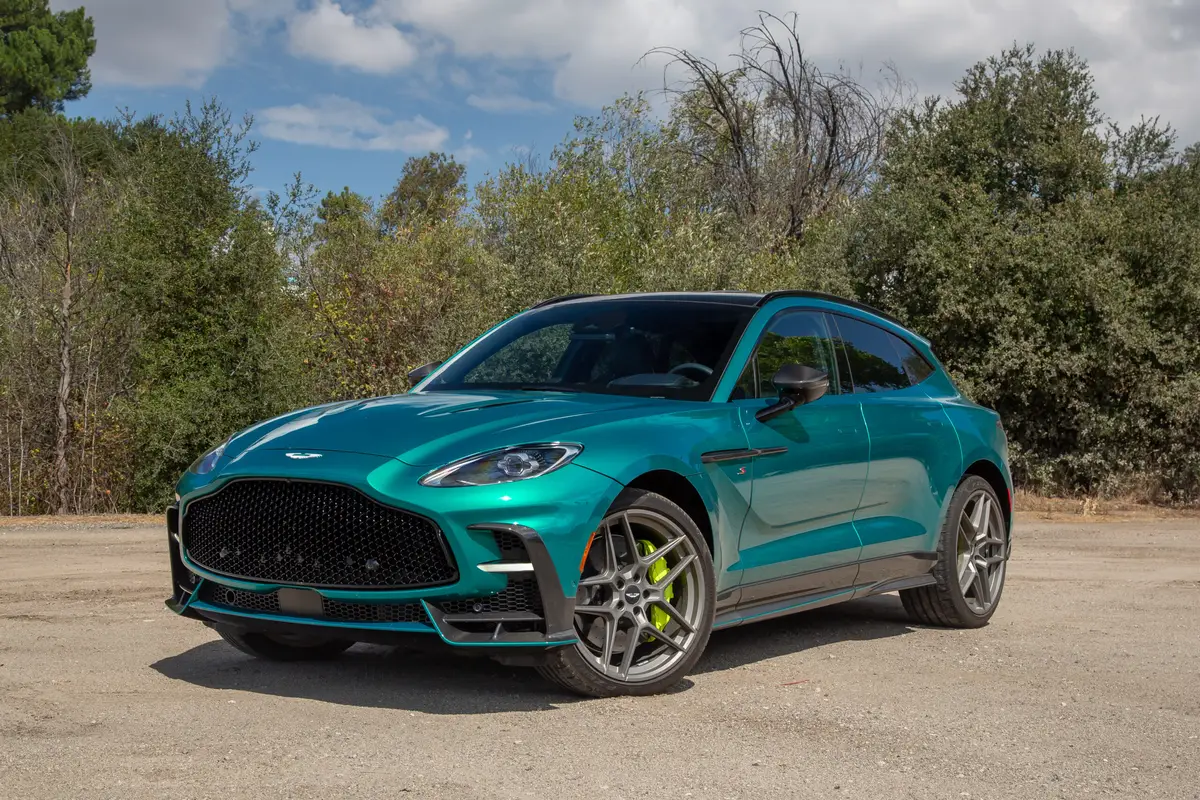
2026 Aston Martin DBX S Review: Excellence in (DB)X S


































